Brightspeed COO Tom Maguire, and procurement and supply chain VP Brenda Rapp, discuss how a build plan lay behind an overnight success.

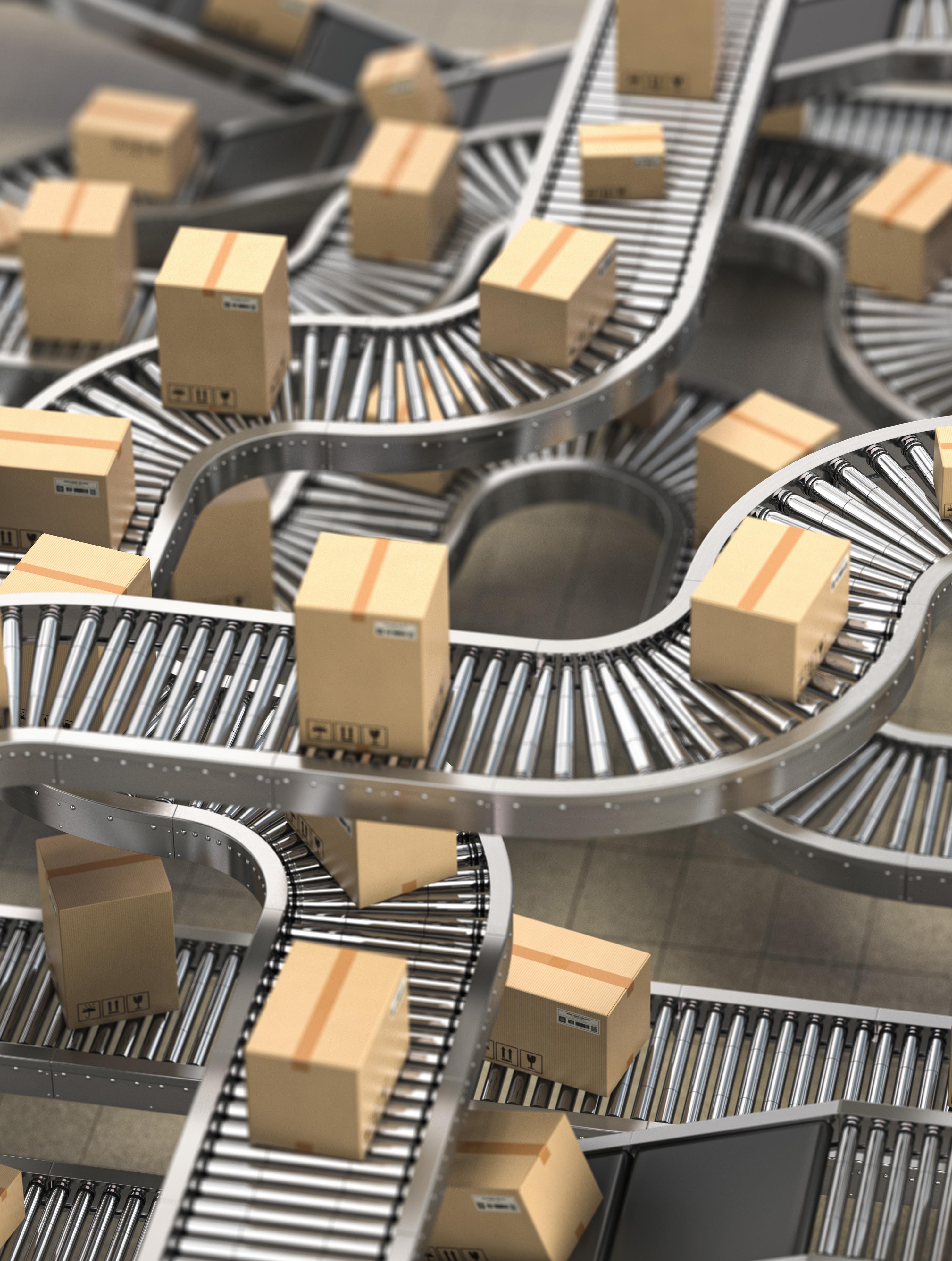


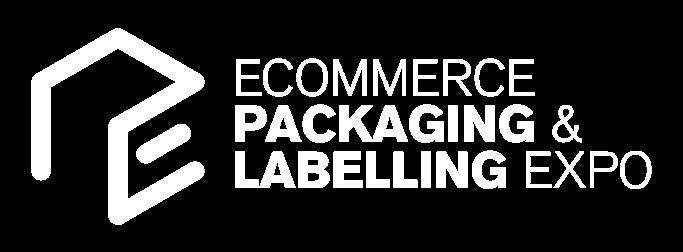

THE LEADING RETAIL FOCUSED SUPPLY CHAIN + LOGISTICS EVENT RUNNING ALONGSIDE FREE TICKETS RETAILSCL.COM 1-2-1 BUSINESS ADVICE 3rd & 4th MAY 2023 LVCC, Las Vegas INSPIRATIONAL SPEAKERS 300 VISIONARY SUPPLIERS 400 INTERACTIVE MASTERCLASSES DISCOVER THE LATEST INNOVATIONS REVOLUTIONISING THE RETAIL SECTOR +AND MUCH MORE! @RETAILSCL #RETAILSCL
We are excited to be a media partner of the Retail Supply Chain and Logistics Expo taking place in London at the end of the month.
It is common knowledge that customers are increasingly asking for faster delivery times and an easier returns system. The only way retailers can achieve this is by adapting their current supply chain model. Speaking of which, this issue, we bring you four must-read interviews from key industry players who continuously strive to stay ahead of the curve.
Our lead interview comes courtesy of Brightspeed’s Tom Maguire and Brenda Rapp (p6). We learn how Brightspeed is rolling out fibre to its copper-connected customers, with a focus on honouring the spirit of service.

Next up is Manuel Brkovic, Supply Chain Director at Podravka. Manuel shares his company’s inspiring supply chain story in the year that marks its 75-year anniversary (p34). Huge congratulations to all the team!
What’s more, we learn how Franprix delivers products from supplier to store across the French capital each day (p58). Thank you to Supply Chain Director, Arthur Caron, for sharing his exciting vision for the future.
Finally, SAP’s SVP and General Manager of Digital Supply Chain MEE Andreas J. Wagner, and Chief Operating Officer for Digital Supply Chain MEE Dr. Johannes Tulusand, discuss the key trends and opportunities for the year ahead (p84)... Just what can we expect?
Plus, don’t miss our intriguing features on reducing food waste (p24), America’s plans to clean up its transportation system (p48), and environmentally-friendly textile innovations (p74).
We hope you enjoy our ninth edition!
3
+44 (0) 203 890 1189 enquiries@ithink.media d.harris@ithink.media t.barnes@ithink.media editorial@ithink.media Editor Anna McMahon Director Danielle Harris Director Tom Barnes design@ithink.media Senior Digital Designer Daniel May WELCOME All rights reserved. Every effort is made to ensure the accuracy of material published in CHAIN Magazine. However, the company cannot accept responsibility for the claims made by advertisers or contributors, or inaccurate material supplied by advertisers. CHAIN magazine is a product of iThink Media Ltd. Company Registration Number: 10933897. Company Registered in England and Wales
4 NINTH EDITION 34 Meet Manuel Brkovic, Supply Chain Director at Podravka 58 Franprix’s exciting vision for the future 74 The textile industry is going plant-based! 84 SAP on the key trends and opportunities of 2023 6 We chat to Brightspeed’s Tom Maguire and Brenda Rapp 24 How can the food system be reformed to reduce waste? 48 We uncover the steps the US is taking to clean up transportation





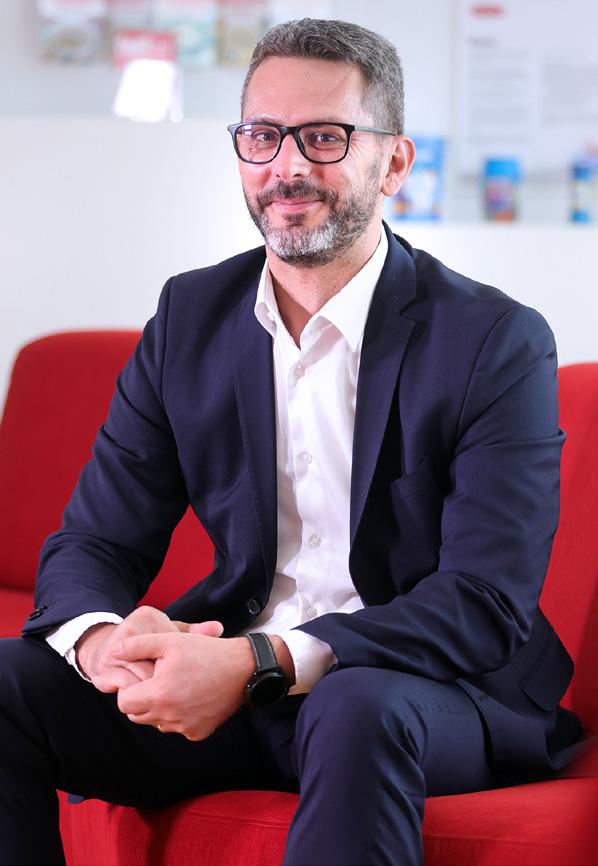
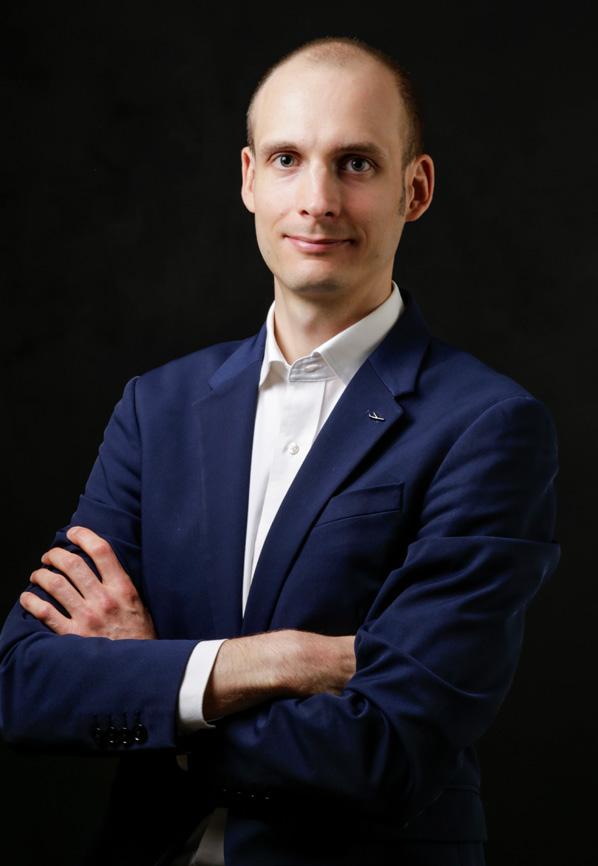
5 6 48 74
34 24
Tom Maguire and Brenda Rapp
58 84
Manuel Brkovic
Arthur Caron
Dr. Johannes Tulusan & Andreas J. Wagner
DELIVERING THE BRIGHTEST OF FUTURES

COVER STORY
FUTURES
Brightspeed COO Tom Maguire, and procurement and supply chain VP Brenda Rapp, discuss how a build plan lay behind an overnight success.
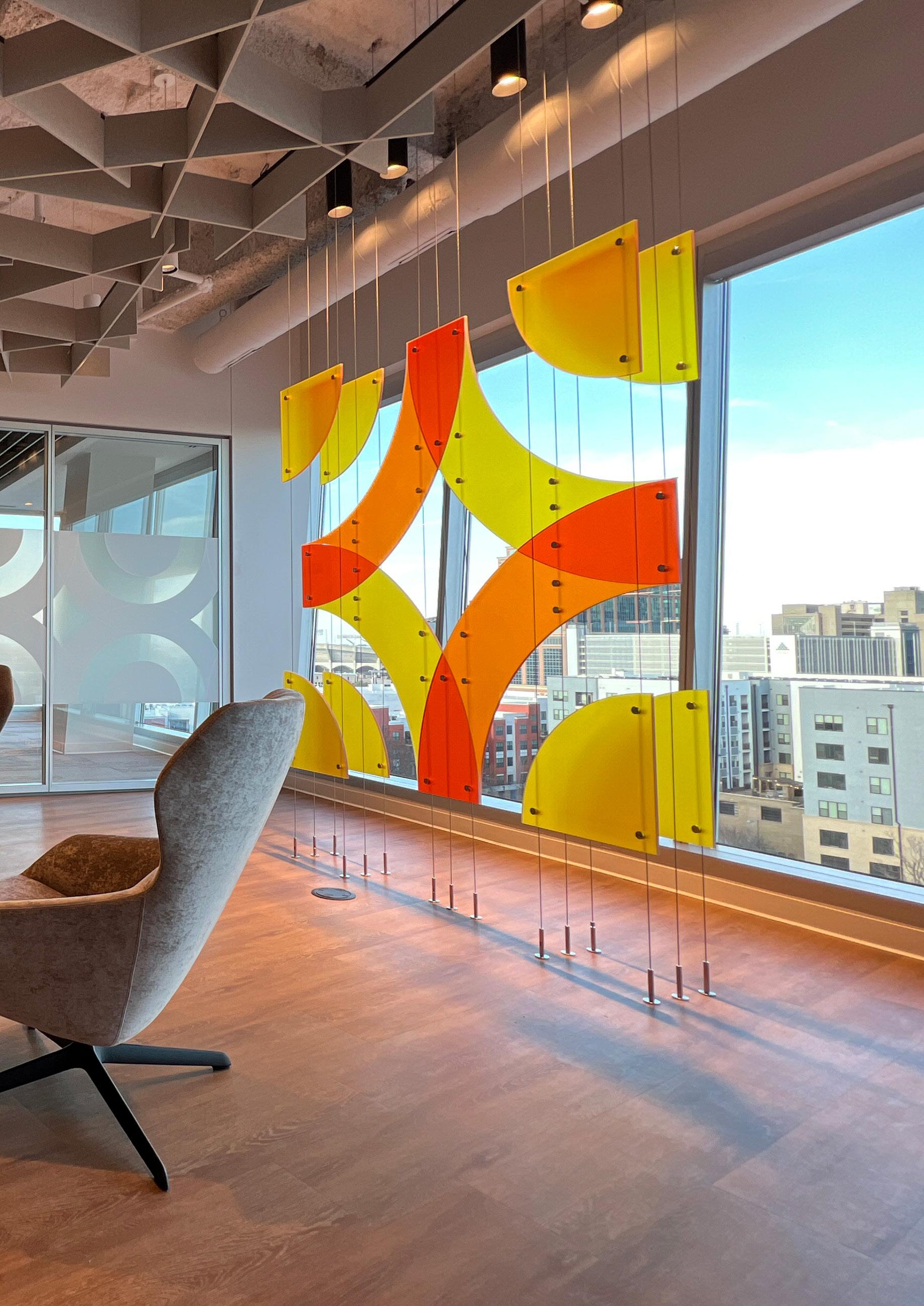

8
n the opening day’s business at the fifthlargest incumbent local exchange carrier (ILEC) in the US, Brightspeed’s customers barely noticed the transition from their former provider, says COO and executive VP Tom Maguire.

“People went to sleep one day as a customer of Lumen Technologies and woke up the next as customers of Brightspeed – which is good news!” says Tom, explaining it was the culmination of three years of hard work behind the scenes. Looking forward, Brightspeed will offer many of those customers stateof-the-art fibre optics networks in a service territory made up of rural and suburban communities across 20 states.
Tom, who has 40 years of experience in the telecoms business, was brought on board early in the process with fellow founding Brightspeed leaders, chief administration officer Chris Creager and chief executive officer Robert (Bob) Mudge. Tom talks through how they were approached by investors Apollo Global Management with an interesting proposition.
9
“Apollo’s leaders had a hypothesis where, if they invested in a company that had a copper infrastructure, they could turn around the fortunes of the company by moving everyone over to fibre,” says Tom. He goes on to reveal that Apollo put together a $7.5billion fund and invited the trio initially to do due diligence and identify a property that fitted the bill, and then stay on to make the process work.
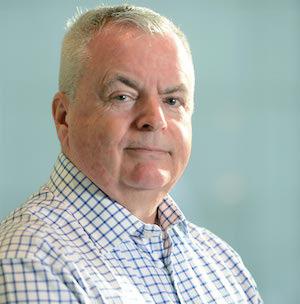

10
Tom Maguire COO
Brenda Rapp, who was then Lumen’s senior director of global network equipment and technology procurement, was one of the Lumen employees who came onboard with the deal.

The territory Brightspeed acquired runs across the Midwest, Southeast, and parts of Pennsylvania and New Jersey, but has no major metropolis.
“We cover roughly 6.5 million households, a million or more of which use us for their residential and small business telecom needs,” says Tom. Though the objective was to bring innovation into their customers’ lives and make the business profitable, Tom emphasises that there was another key priority – service of the kind that rural communities rarely had access to.
Brenda, newly promoted to vicepresident of procurement and supply chain, says until now the focus has been on stabilising what existed and making sure that the new company has all it needs to ensure legacy business runs smoothly and good customer experience is maintained.
11
“The Brightspeed Fibre product is a fairly new architecture with a new suite of operational and building support systems. That’s the start-up piece of the equation and things are going well”
Tom Maguire COO
“We are doing that by getting critical spares to the field quickly. A lot of my focus right now is on our supply chain. Tom’s team put together a five-year build plan, which makes it a lot easier for us to plan for equipment, supply and everything else we need. With a build plan in place for 2023 to 2027, we know exactly what locations, markets, and wire centres Tom’s teams plan to build. We have standard architecture, standard equipment bill of materials and we can provide accurate forecasts, put purchase orders in and get the deliveries to support the fibre build teams,” explains Brenda.
Tom likens the process to an iceberg, where only a tip is visible. The biggest part of the preparation to make such a deal work lies below the waterline, unseen.
Running the fifth-largest ILEC in the US clearly gives Tom a buzz. Delighted with the transition he says, “We pulled all of this off despite being in the middle of a pandemic when the vast majority of our teams were never in the same room.” He has never lost his enthusiasm for telecoms.
“It’s an interesting industry,” he says. “It involves legal, regulatory
Central Office
• Calix OLTs
• Network Routers
• Backhaul Network
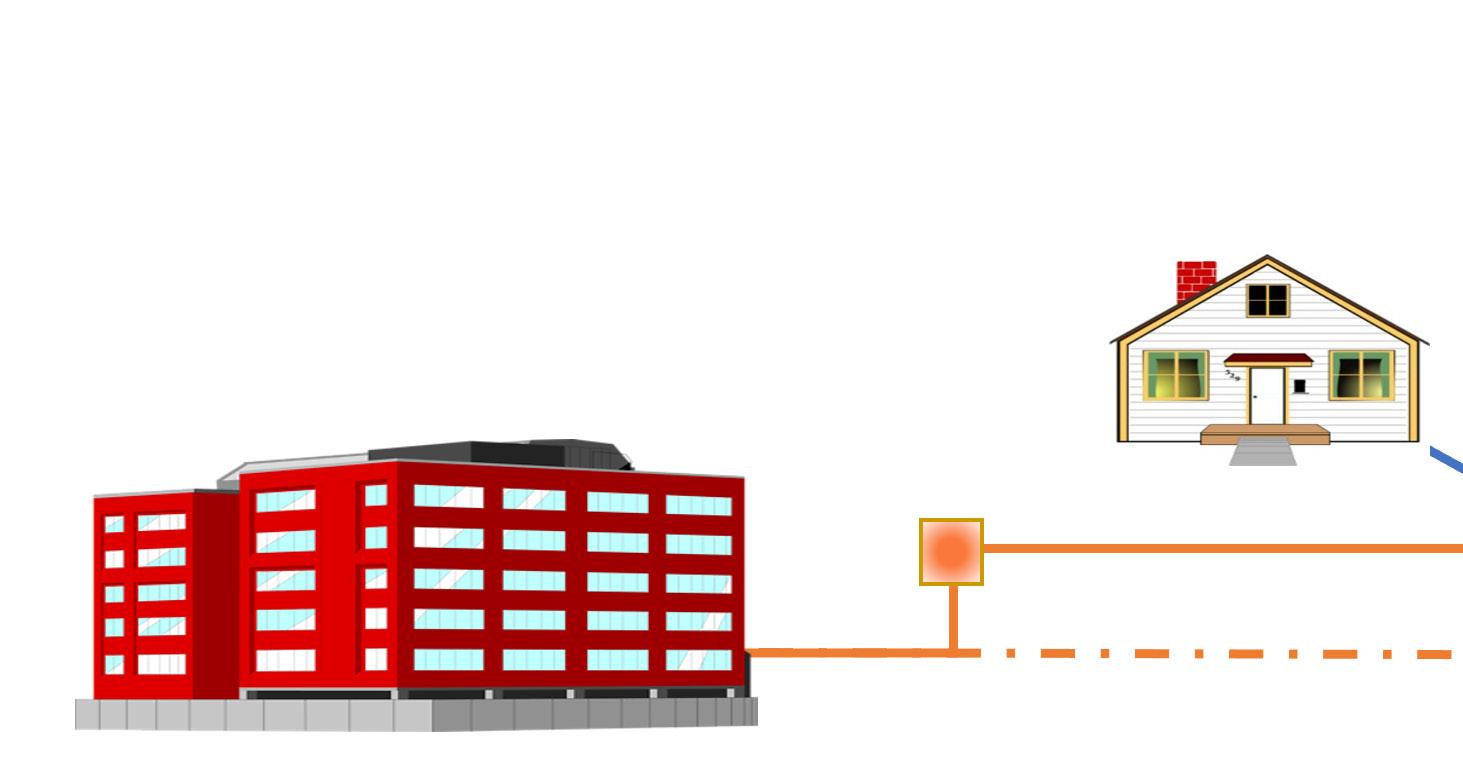
12
How Brightspeed is rolling out fibre to its copper-connected customers
Feeder and distribution fibre Calix WiFi6
D-Tap Splitter
and supply chain and it’s a highly integrated, highly diverse business.”
Tom goes on to detail how Brightspeed is running its new network. “The Brightspeed Fibre product is a fairly new architecture with a new suite of operational and building support systems. That’s the start-up piece of the equation
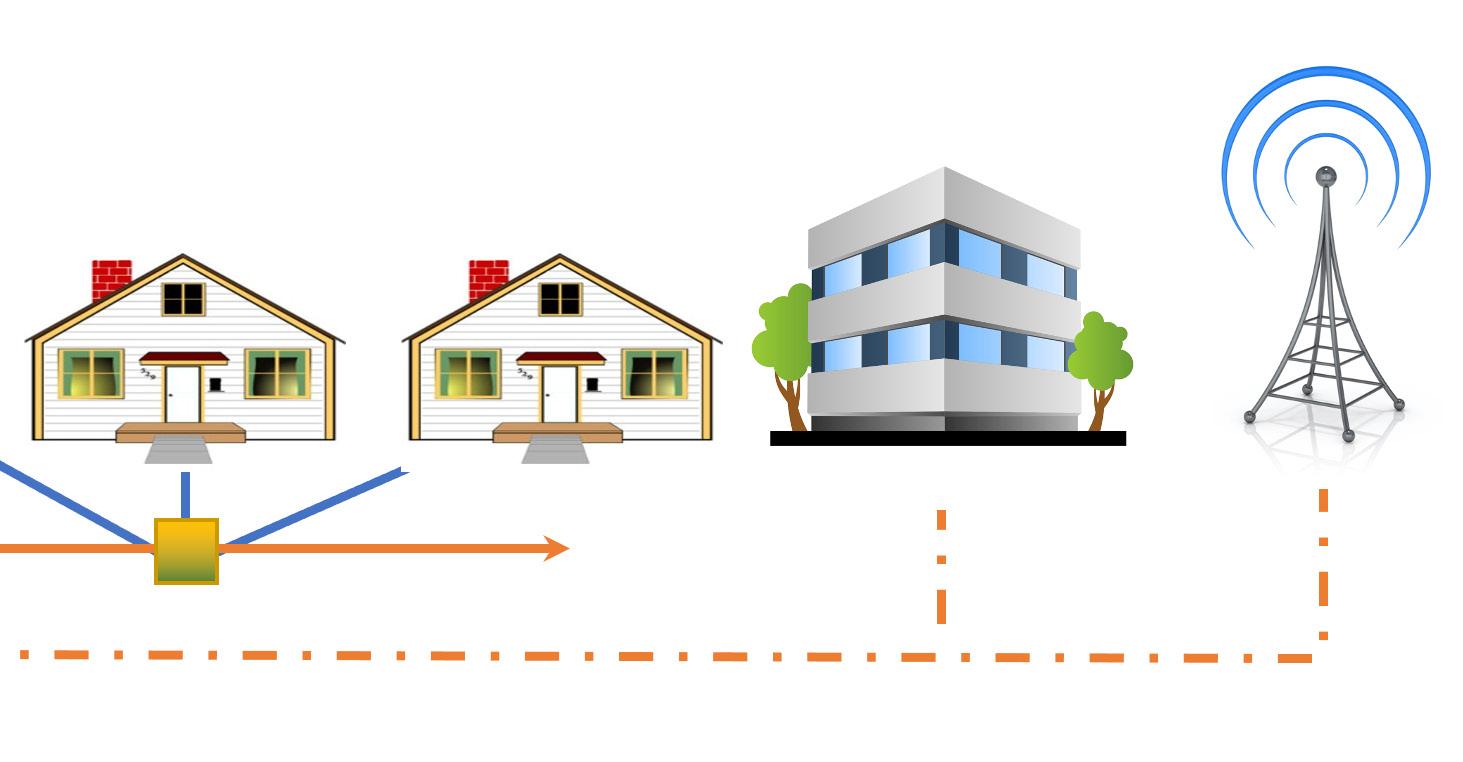
and things are going well,” Tom continues, adding that the whole enterprise is feel-good. The planned architecture includes a ‘plug-and-play’ model to minimise the expense associated with traditional fibre splicing.
“Reducing our cost per location allowed us to do more build,”
13
“With a build plan in place for 2023 to 2027, we know exactly what locations, markets, and wire centres Tom’s teams plan to build”
Additional fibre capacity pushed to customers
Calix In-Home ONT and WiFi6 Mesh Towers



says Tom, highlighting that on top of the $7.5bn Apollo paid to set up the company, it invested another $2bn to roll out the fibre infrastructure that Tom says will be transformative.
“There are a lot of studies around people’s educational or business opportunities, but I talk to customers living in rural America whose lives depend on really strong connectivity that just doesn’t exist in the copper world,” says Tom.

Brenda says that the new procurement, purchasing and supply chain organisation involved collaborating with 35 fellow professionals while negotiating and executing more than 450 supplier contracts. As Tom puts it, you can’t just go to a local hardware store to pick up telecoms company supply needs, so he credits the early faith of partners such as Calix with being part of that enablement. “Calix
is providing our OLTs or optical line terminals and ONTs, optical network terminals, and wifi-6 mesh towers,” he says.
“We standardised on things because of supply chain issues, especially relating to fibre infrastructure. There’s a lot of demand for electronics associated with fibre, so about a year before the transaction [with Lumen] closed we went
15
“Calix is providing our OLTs or optical line terminals and ONTs, optical network terminals, and wifi-6 mesh towers”
Brenda Rapp, Supply Chain VP
to major providers and told them what we wanted,” Tom continues. “There are only a few manufacturers and we had certain criteria for who would work best for our planned fibre build.” The pandemic led to the decision to near-shore and avoid transportation issues that were dogging existing providers. “We wanted to stick with certain companies and manufacture in North America as much as possible,” he says. Having a long employment history in the industry, Chris, Bob and Tom already knew many suppliers.
“We sat down with them and told them what we were looking for,” he says. “We were trying to build as quickly as possible and we are still looking to ramp things up,” says Tom. The same kind of process is in place with partner Corning. “We told them what we needed and how much we thought we would need, and they said they could support us as well.”
Having made the transition between Lumen and Brightspeed herself, Brenda emphasises that in her area of work good planning is a key to

16

17
success. “It is refreshing to know that the investment for growth is here,” she says. “The company culture, financial backing and management support to execute and place orders far in advance, to ensure that we have what we need when we need it – well, that doesn’t happen in a lot of companies.”
Brenda says, “It’s really nice to go to work for a company that has a higher purpose rather than one that focuses just on making money and putting products ‘out there’. There’s a higher mission in terms of delivering high speed internet and infrastructure based on investment in infrastructure that these underserved areas haven’t seen previously.”
A former New Yorker who now lives in Florida, Tom admits he had assumed everybody in the US had cell phone connectivity, laughing
as he adds: “Even my 87-year-old mother has a cell phone!” On a more serious note, Tom points out that in his experience his mother’s demographic has embraced online and side lined old-style voice service. “They shop, and they don’t worry about getting to a store because they click on something and order it, and it just shows up!” he says.
Brenda is quick to credit Brightspeed’s partners for helping the company provide such customers – existing and future –with the right equipment to make interconnectivity the stuff of the everyday. To illustrate, Tom pulls up a graphic showing the fibre network running in parallel with the copper network. He highlights Zyxel as a key partner in this.
“Zyxel has been around a long time and is very reliable in supporting our legacy business,” he says. “Even once we are done with the initial fibre plan, assuming that we don’t add to it, we can only build out to about half of the households that we have and that means some customers will still be served with copper, so it’s important to me that we maintain relationships with them,” he says. Even with capital made available through the US
18
“
Zyxel has been around a long time and is very reliable in supporting our legacy business”



No

technology leadership and trusted partnerships, Nokia is helping industries digitize to be more connected, productive, safe and sustainable.
Through
Delivering critical networks to help address global issues Learn more: www.nokia.com Fixed Networks Optical Transport Cloud & Network Services IP Routing
green without Digital
government and grants from the Broadband Infrastructure Fund, a copper-based service will continue for many households for some time, Tom predicts.
“We are still investing in our legacy copper and Nokia is our ethernet core edge equipment provider. They also provide some software to monitor our copper network
territory, there could be miles between households.”
That vastness is one of the reasons Brightspeed has found IQGeo’s geospatial software solutions for telecoms and utilities invaluable. Tom says engineers used to take days and weeks to accomplish what IQGeo’s engineering platform can do in minutes.
in our legacy copper and Nokia is our ethernet core edge equipment provider. They also provide some software to monitor our copper network adequately and make sure we run that as efficiently as we can for customers who remain on copper”
adequately and make sure we run that as efficiently as we can for customers who remain on copper,” says Tom.
A recent first visit to Europe brought home to Tom just how vast the territories in the US could be. “I went to Venice, and it struck me there was a lot of water, but every household had fibre,” says Tom. “Venice is a densely populated area, however, in our
“Outside plan engineers make records and keep databases of where telephone poles and cables are, where the rocks and manholes are. Typically, it was a manual process for an engineer to go out there and over time, some records were maintained more accurately than others,” Tom says.
“We started working with IQGeo, a company that draws information from golden sources
21
“We are still investing
and databases and uses satellite imagery. As it’s an electronic platform, when people are actually doing the physical work associated with the engineering design, they can make changes and edits on a tablet while they are out and that will trigger equipment and materials orders necessary for that particular build. It helps us from an inventory management perspective because we know how many ‘widgets’ are out in the field,” says Tom. In addition, outside plan contractors who


Building better networks
IQGeo’s network management software is helping innovative fiber operators like Brightspeed to rapidly and e ciently deliver vital broadband services to homes and businesses. Our award-winning enterprise solutions are used around the world to plan, construct and maintain the networks of the future.
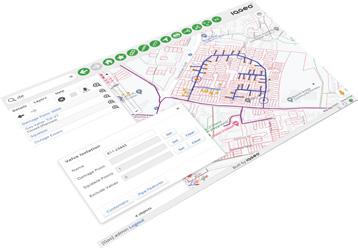


• Model anything
• Use anywhere
• Integrate everything
• Innovate constantly
22 Copyright © 2023, IQGeo UK Limited. IQGeo is a registered ® trademark. iqgeo.com Carbon Neutral Organisation
TM
“IQGeo is an electronic platform, when people are actually doing the physical work associated with the engineering design, they can make changes and edits on a tablet while they are out and that will trigger equipment and materials orders necessary for that particular build”
complete certain segments of the build get paid more quickly because all the invoicing is triggered electronically, as well.
He explains that the information gathered also helps Brightspeed secure funding. “In North Carolina, for example, we received $90million in grant funding, which sounds like a lot of money but when you are
building infrastructure it is not,” says Tom.
“The reason we're able to do this innovation is because when we took over this particular territory, it didn't have a lot of fibre; we were effectively starting from scratch. That allows us to do things differently and it's actually a strength of our business.”
HONOURING THE SPIRIT OF SERVICE
The spirit of service is still an important ethos for the people who work for Brightspeed.
Tom is quick to bring up the name of Angus MacDonald, the legendary US lineman who epitomised employee devotion to maintaining telephone connectivity during the snowstorms of 1888. Tom also points out that Angus would not have the snowshoes, flashlight, rope and equipment to get his job done without procurement teams, and that fact has not changed. “It’s the people in Brenda’s side of the business
that enable us to carry on,” he says, adding, “I was talking to somebody in the wireless world one day and he mentioned a big storm was coming and that everybody in his wireless business was going to work from home thanks to technology and connectivity. And I said, ‘Yeah, well, we'll be out there making sure your connectivity works,’ and sure enough, despite weather issues, the next day our team all showed up for work.”
For further information on Brightspeed, visit www.brightspeed.com
23

FOOD WASTE
Food production and climate change are inextricably connected: that is a fact. So is food waste. When a foodstuff is binned uneaten its entire carbon footprint from cultivation, harvest, transportation, retail and home storage, is also being dumped. So how can the food system be reformed?

FOOD SYSTEMS ARE RESPONSIBLE FOR NEARLY A THIRD OF ALL GREENHOUSE GAS EMISSIONS, YET A THIRD OF EVERYTHING GROWN FOR HUMAN CONSUMPTION NEVER MAKES IT TO THE TABLE.
t is composted, dumped in landfill or turned into animal feed instead.
Danielle Nierenberg is the president of Food Tank, a non-profit organisation aimed at reform. She has produced a food and tech policy platform to engage and empower people working in agriculture, food and public health policy. Data-driven tech in the food system could provide answers. The truth is, everyone needs to make more effort to drive down food waste and loss. Food waste is the official term for food that is left to spoil or else discarded while still edible. Reasons could be poor stock management, confusion about the difference between sell-by and
best before expiry dates, or just forgetfulness. Food loss is the term used to describe food that spoils before it even gets to someone who can eat it, and is usually the result of transportation challenges, poor storage or weather damage.
The United Nations (UN) targets world hunger as part of a sustainable development plan. There is a direct link between farm-to-retailer food supply chain issues, and food loss and food waste, according to an autumn 2022 report published by global management consultancy McKinsey. Following on from its 2016 report, which detailed how big data would revolutionise world food chains using advanced analytics,



McKinsey experts are examining ways that grocery retailers, manufacturers and the food production industry can tackle the loss and waste issues together. The experts, based in Cologne, Paris, London and New York, point out in their report that the cost of food loss can be equivalent of, or greater than, a retailer’s annual net profit. In a small and informal poll, two-thirds of the industry leaders questioned agreed weak governance was the biggest roadblock to the implementation of food loss programmes in their companies.
C-suite executives should be viewing food loss reduction as a strategic priority, says McKinsey.

“One of the most important enablers for significant and sustained change, therefore, is a strong governance model – with cross-functional accountability encompassing procurement, research and development (R&D), the supply chain, manufacturing, marketing, and finance; clear responsibilities and objectives; and key performance indicators (KPIs) at the individual, functional, and

enterprise level,” the report authors state. “Designating an owner for each food loss initiative and aligning on measures of success will help ensure progress. New performance metrics might include, for instance, the volume of food lost, the profit from upcycling, or the
revenue gained from saving food that would otherwise be lost,” they continue.

Winnow, a company that helps commercial kitchens and chefs manage and monitor their food waste and costs, states that

"ONE OF THE MOST IMPORTANT ENABLERS FOR SIGNIFICANT AND SUSTAINED CHANGE, THEREFORE, IS A STRONG GOVERNANCE MODEL"

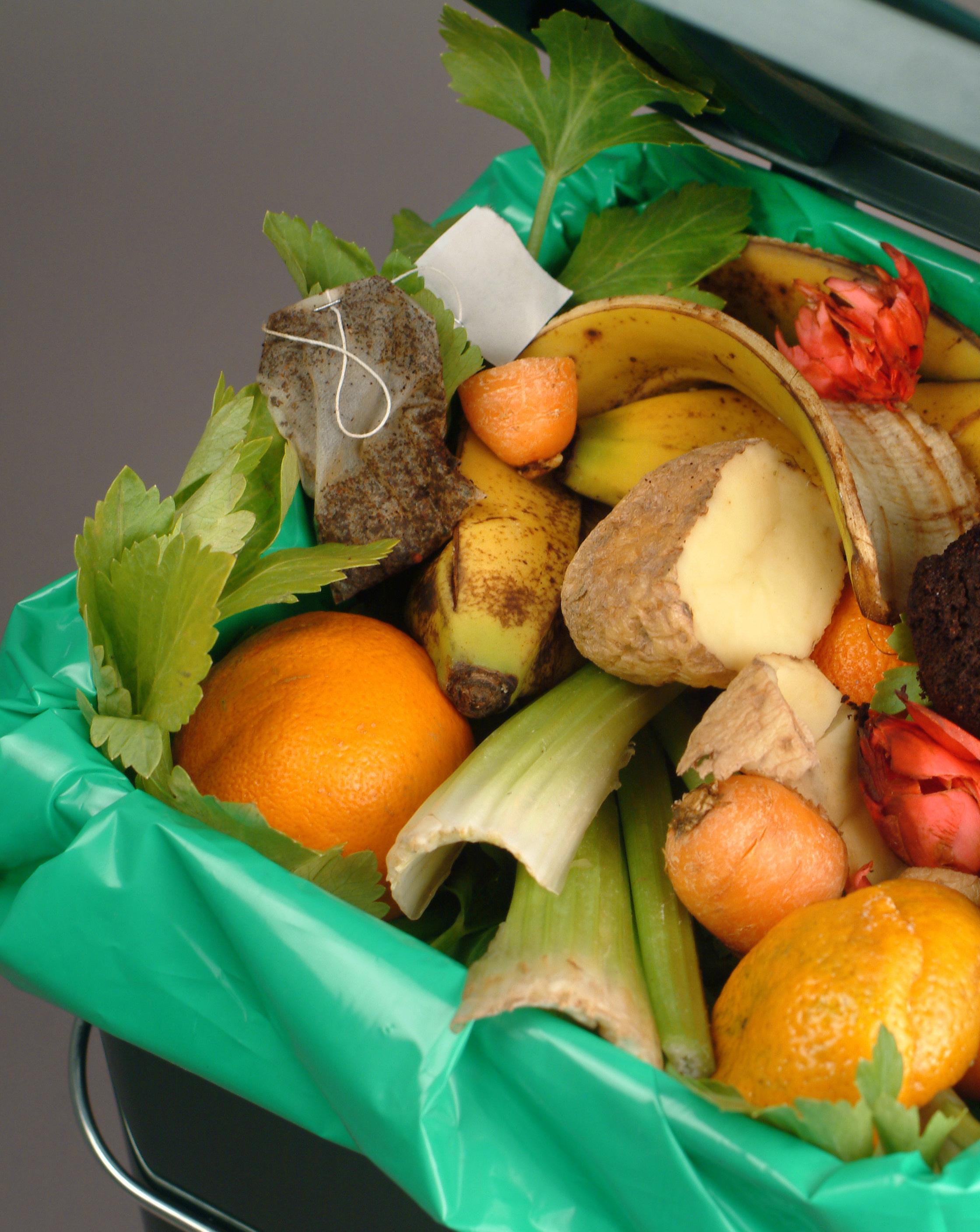
food waste costs the hospitality industry more than £100billion annually. It calculates that its technology has helped users save £42million, or the equivalent of 36.5m meals, and 61,000 tonnes of CO2.

There is a financial incentive for the retail, horticulture and agriculture sectors to improve their processes and performance. But where are the domestic solutions? Smart fridges can prompt owners to eat what they contain by bringing up a visual list on the door and monitoring vegetables’ lifespan. At the top end of most people’s fridge-purchasing budget, these internet of things (IOT) devices can also keep contents fresher for longer using optimised temperatures, humidity and even a sun cycle, and allow owners to order and restock via connections to online shops. Food waste apps like Nosh are a less pricey alternative to a smart fridge. They monitor shopping and eating

"FOOD LOSS IS NO-ONE’S PROBLEM, AND NO INDIVIDUAL OR TEAM OWNS AND CHAMPIONS THE ISSUE. BUT IT MAY SOON BECOME AN ISSUE THAT NO-ONE CAN AFFORD TO IGNORE"


- McKinsey
habits by helping users keep an inventory, suggesting recipes for food already in the house, and issuing alerts when food is about to go off. As an alternative solution, OLIO enables users to pass on food and non-food items to neighbours also using the app. OLIO calculates that 58million portions of food have been shared (so far) as a result.

Householders can only make so much difference by curbing food waste, however. The drive to curb food loss still has far to go. As McKinsey’s experts put it, the unfortunate reality is that food loss is no-one’s problem, and no individual or team owns and champions the issue. But it may soon become an issue that noone can afford to ignore.

A People-Sensitive Supply Chain Transformation
Manuel Brkovic, Supply Chain Director at Podravka, shares his company’s supply chain story in the year that marks its 75-year anniversary.

34 BUSINESS INTERVIEW
Transformation
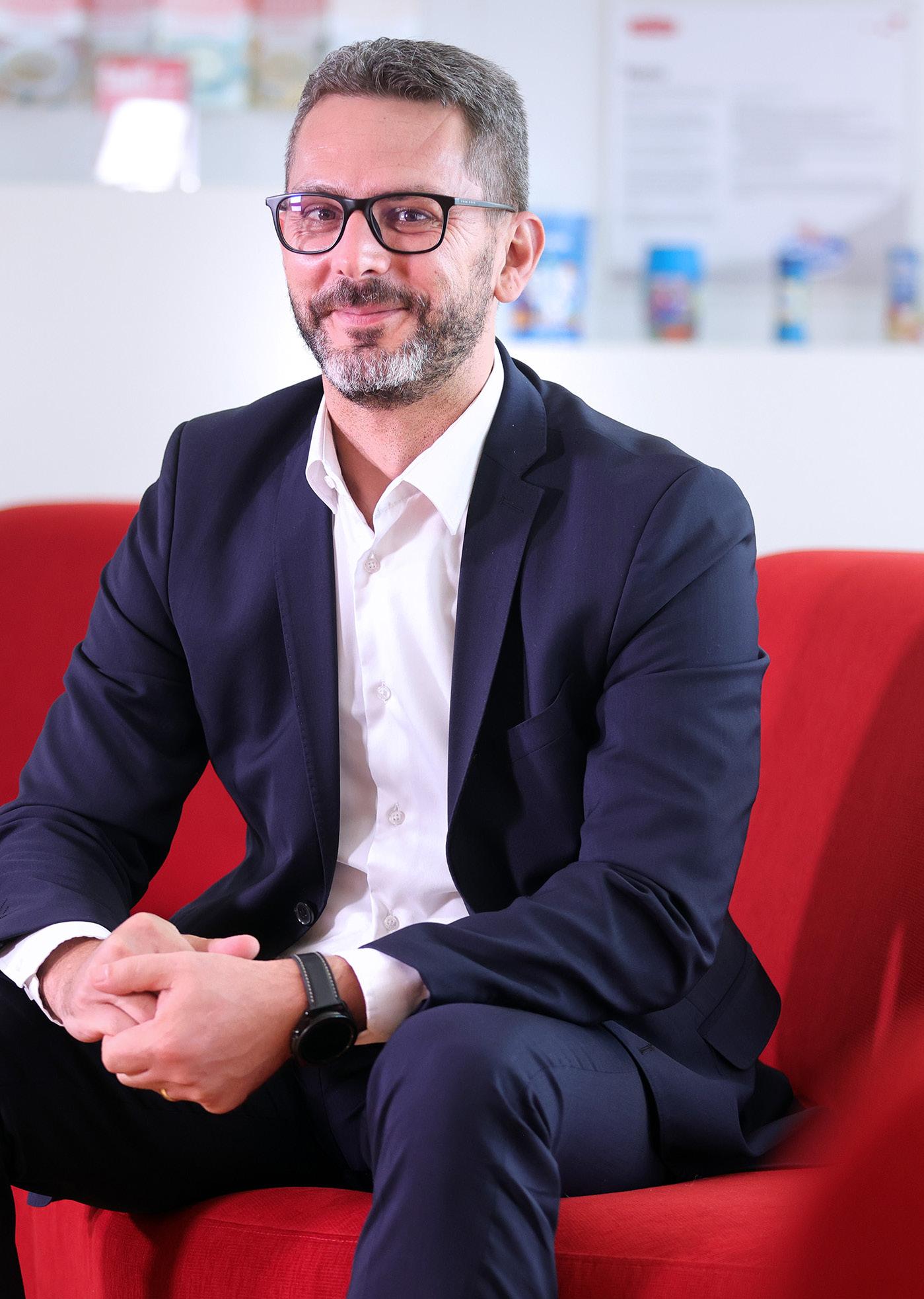
People-Sensitive
Podravka is one of the largest food manufacturers in Southeast, Central and Eastern Europe and is proud to be celebrating its 75th anniversary this year.
s well as the food processing side of the business, the group has a pharmaceutical company, which has been in existence for 50 years. There are over 1,800 different products in Podravka’s impressive portfolio, with around 6,500 employees. The company has 17 production sites in four countries, serves over 70 markets and its revenue in 2021 was around 600 million euros.
Manuel Brkovic, Podravka’s Supply Chain Director, tells us more; “If you look at the Podravka supply chain itself, we have 17 manufacturing sites and over 1,000 SAP warehouse/ storage locations all over the world.
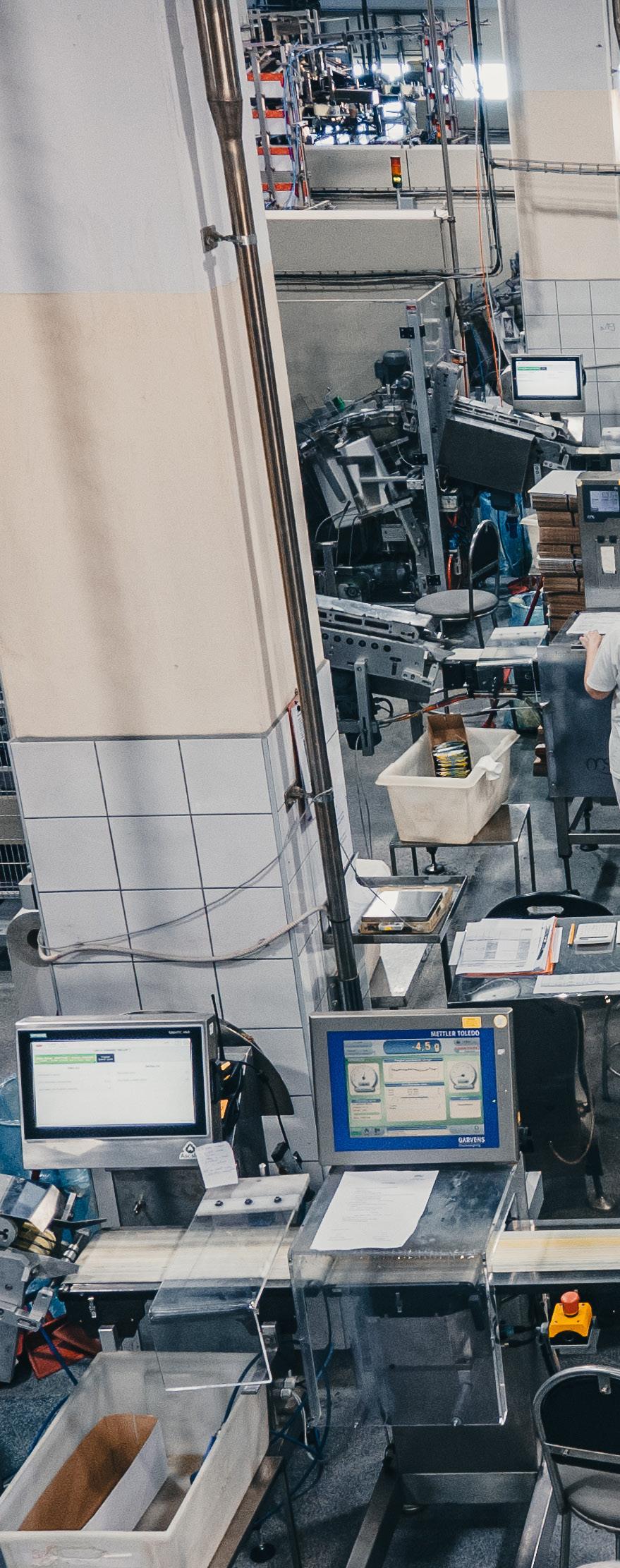
36

37
When you consider the size of our market, which is the whole world, you can understand the complexity we are facing. Our long history and the fact that our region is still in a transition to a developed democracy and modern productive society means our supply chain transformation has brought about big changes.”
Manuel talks about three main pillars of Podravka’s transformation journey – lean excellence, digitalisation, and modernisation/automation, and all of them surrounded by a green/sustainability agenda. He continues, “Such a large company started facing the global problem of finding the right employees, but also finding enough of them to cover our growth. Additionally, with the development of Croatia, labour costs are going up, which impact our bottom line. About 20 years ago, Croatia offered cheap labour, great knowledge, and people that knew how to make high-quality products, and this was easily bringing jobs from more developed countries. We are now finding that we are losing workers because salaries are going up in other industries, but the food industry is not closely following this trend, and competition is also getting stronger and stronger.”
The aforementioned pillars were chosen to remove non-productive work from employees, enabling them to focus on producing the value. Manuel says, “With lean and digitalisation, data is available on screen and paperwork can be removed. People can lose up to two hours per day setting up the machines, preventing them from producing real value in this

38
time. The automation of production machines enables them to cut down on the time they spend on mundane tasks and be more productive. If a robot can do something, why shouldn’t it?”
These changes ultimately serve the buyers i.e. the retail stores. Manuel explains, “Our production needs to be planned and runs at one to one
and a half months, so that orders can be delivered 24 to 48 hours after they are placed. We need to be able to forecast to prevent shelves from being empty because the production time is too long to produce an order straight after it is placed. That is why we introduced sales and operations planning and stock control. To be such a big manufacturer, you need stock
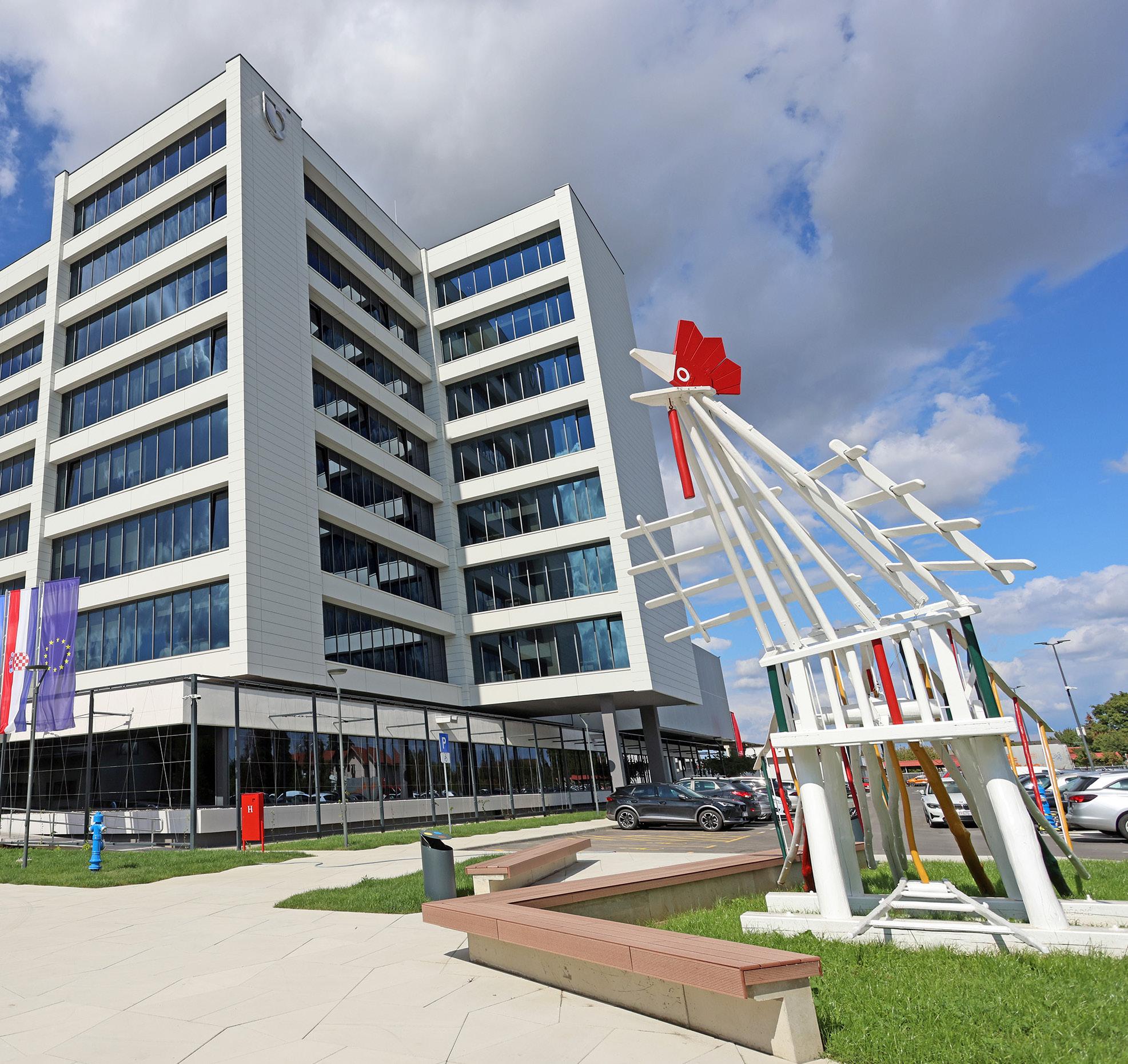
39
availability, which means hundreds of millions of euros in stock. It can put a great strain on the business without proper planning.”
Better planning and stock control also amplify a sustainability element. Manuel elaborates, “If a machine is 10 per cent more

40
“If a machine is 10 per cent more productive in a specific timeframe, you are using less energy to get the job done”
productive in a specific timeframe, you are using less energy to get the job done. Less paperwork is also better for the environment, and if the machine has to be higher in energy class, it will make the same product with less energy consumed. This is what we call our green strategy for the supply chain transformation.”
What challenges has Manuel faced in implementing his supply chain strategy? He answers, “Lean is a modern method that is still not completely understood in this area of the world. Technology and digitalisation face the same problem because the workers in Podravka are typically 45 to 50 years old. They are not used

41
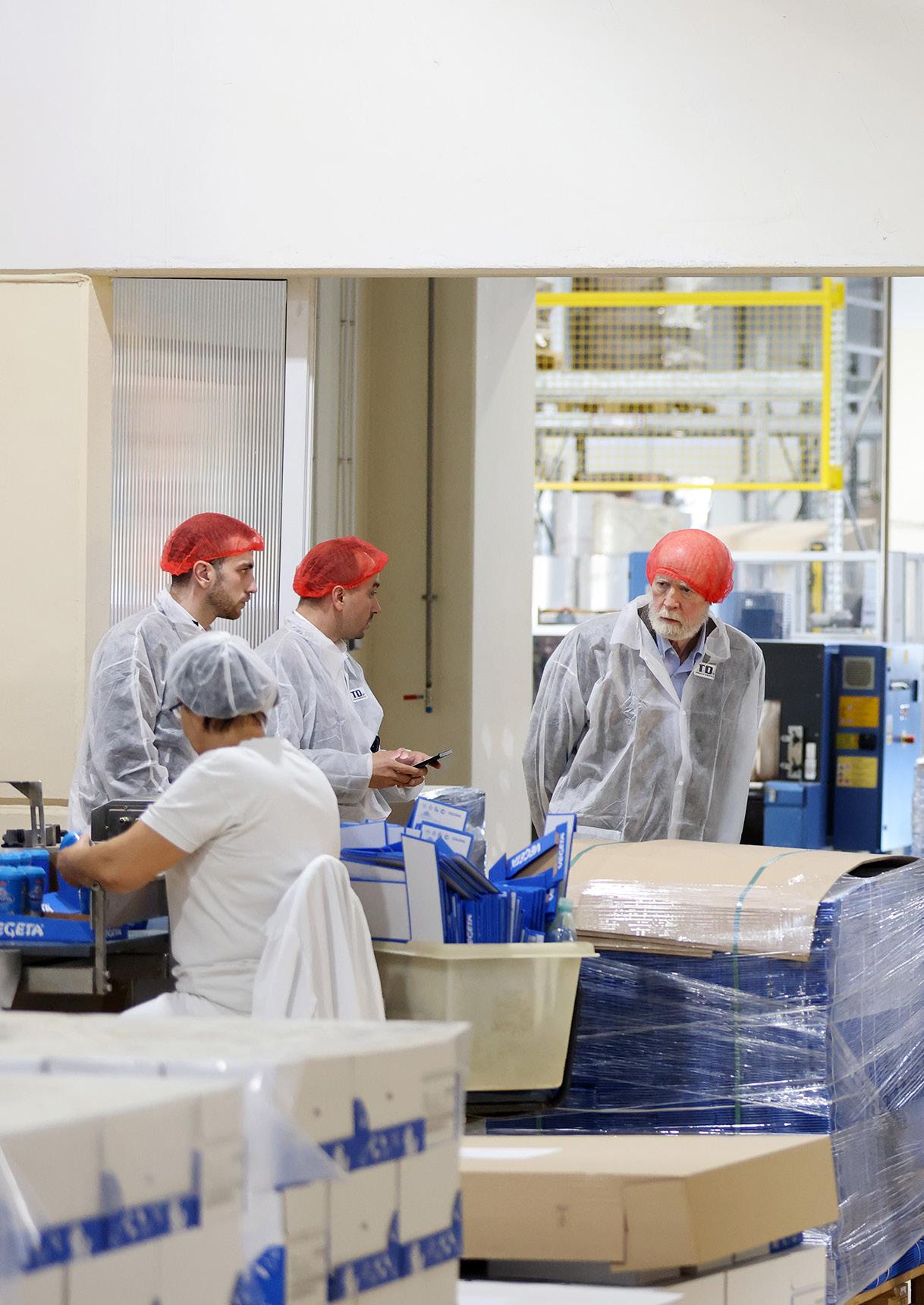
“Digitalisation and technology are running through Podravka, age of the company, it is always with a human approach. Industry 5.0 is about, putting the people at the centre”
to touchscreens. But, if we work across the three pillars with better planning in place, we can slowly and continuously approach training our people to be more productive.”
This challenge in changing the mindset is perhaps the biggest obstacle for Manuel and his team. He explains, “With a 75year old company and employees who have been here for over 25 years, the new technology, new methodology and new ideas can be frightening. The operations and technology team is socially-sensitive and fast to explain that the people will be doing much more valuable work.
Instead of noticing only when there is a mistake, they can now see how they can save money and improve the productivity, so they are understanding that they are increasing their value, together with increasing the company value. It is easy to transform through technology, but you need to have the people on board. Our sociallysensitive approach show the
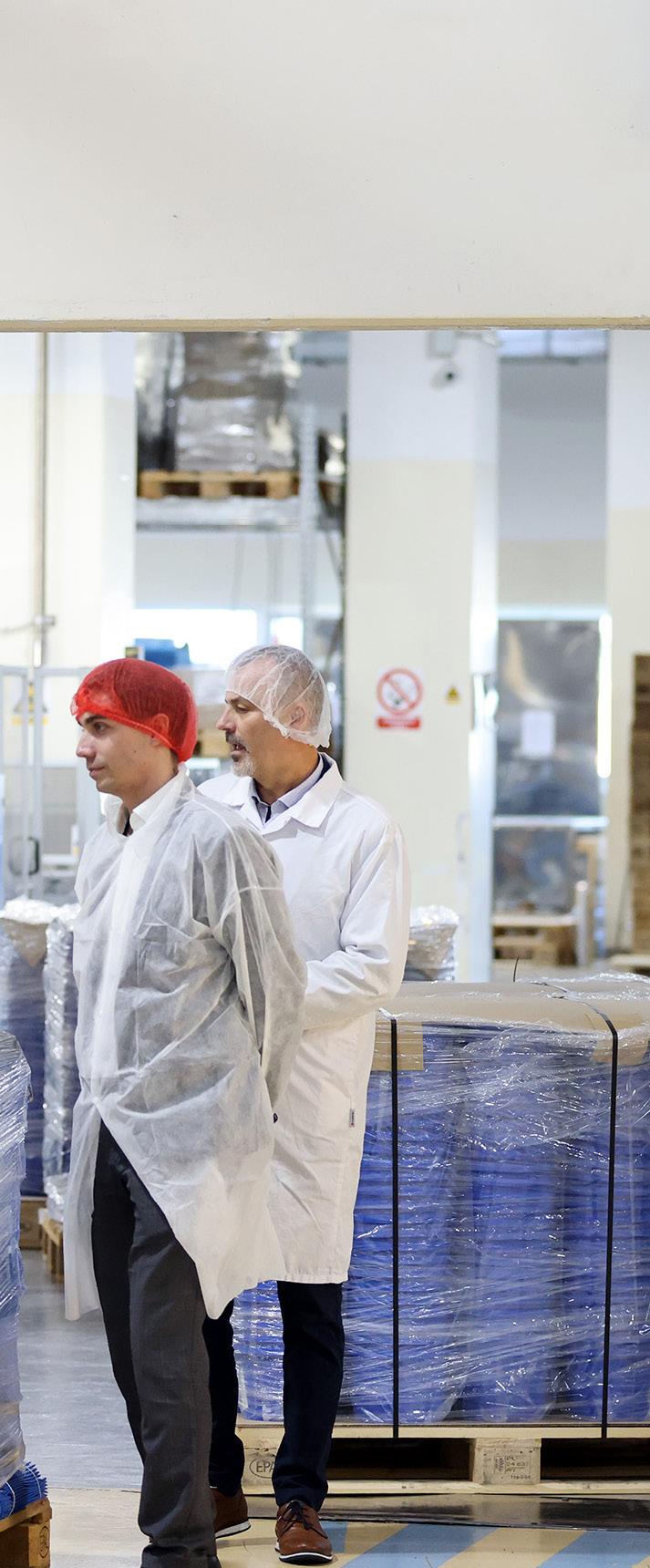
43
Podravka, but due to the approach. This is exactly what
employees how they can use their time for much better things.”
Manuel says Podravka’s biggest achievement in its 75-year history is the fact that it is still going strong. He continues, “After switching from communism and socialism to the free market, too many companies in our region disappeared from the market. With the growing competition and the big global players cornering the market, it is a huge achievement to be still here.”
to implement SAP, and with the help of our partner Atos, one of the first regional companies to use BW (Business Warehouse) that connects and shows all important financial and business data. We are further developing our technology to switch to the newest SAP software available, and Atos is continuing to support us on the reporting side.
“The founder of Culmena was one of the first people in Croatia to start talking about lean. We brought
Podravka’s strategy for the future involves collaboration with key partners such as SAP (Atos) and Culmena. Manuel highlights, “Our partners are the core of our transformation. Our ERP system connects all the dots in our company. Without it, the supply chain, sales, finance, and all other departments would have their own software and not be able to see the entire impact on business. Podravka was the first company in Croatia
Culmena here to Podravka to help bring that knowledge. The project is all about trying to teach our people how to think lean. Culmena understands the mentality of the Croatian people, so we are able to take a psychological approach to slowly convincing them that these changes are for the better.”
Leveraging the opportunities of Podravka’s transformation will be Manuel’s next job. He says, “We
44
“Podravka was the first company in Croatia to implement SAP, and with the help of our partner Atos, one of the first regional companies to use BW (Business Warehouse) that connects and shows all important financial and business data”
The art of intelligent warehouse operations
Logistics and supply chain management are a finely integrated art. Recent disruptions have made it even more important to have accurate, real-time information about every part of your supply and delivery chain — including your warehouses.
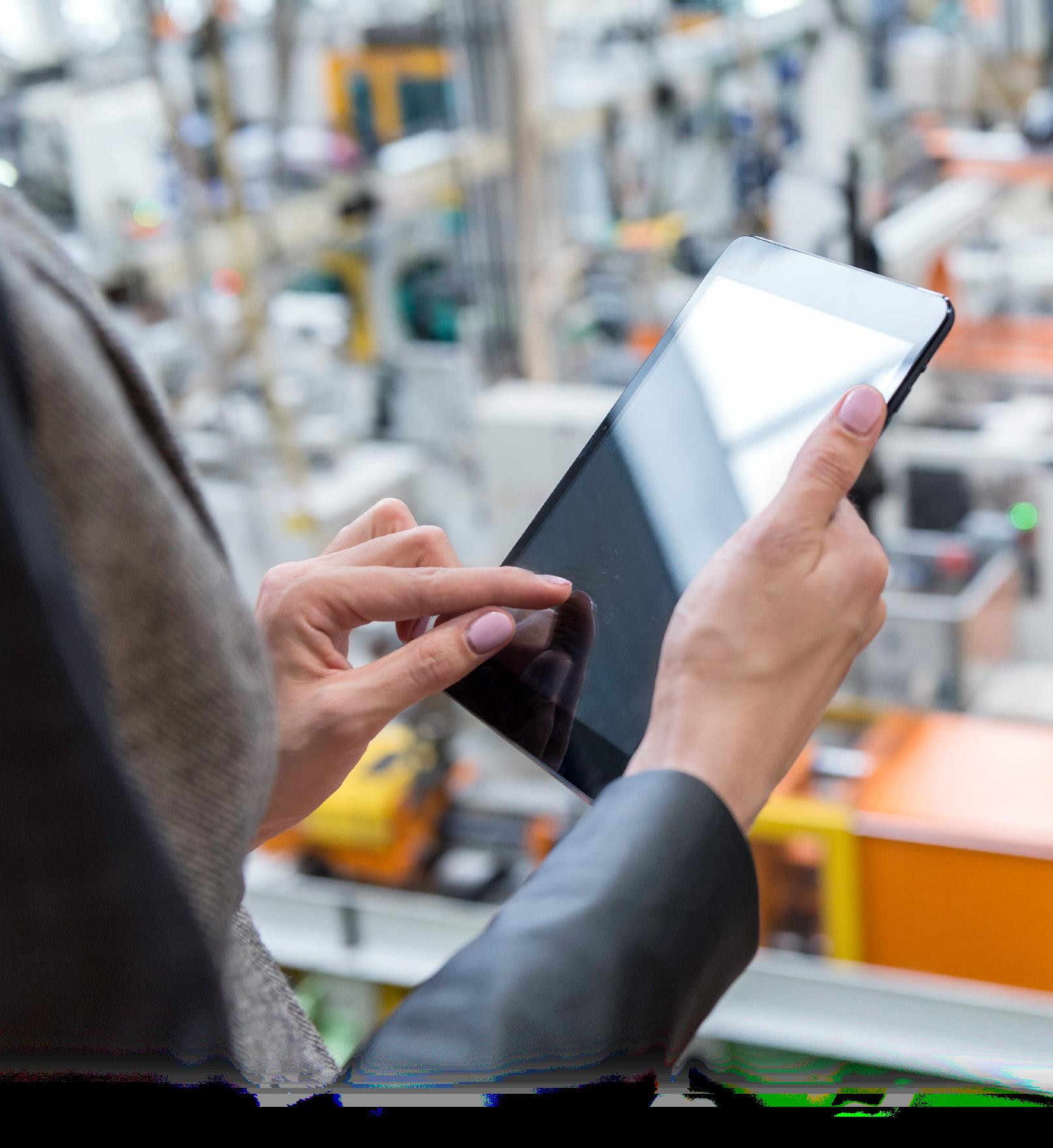
Intelligent, automated warehouse management solutions from Atos and supported by SAP provide a unified, integrated way to monitor and control your critical warehouse operations. We integrate consumption predictions for superior stockkeeping, plus track-and-trace on large warehouses and yards, delivering:
• Optimised control of day-to-day operations
• Easy storage and retrieval, even on very large sites
• Real-time updates and visibility
• Full traceability of all operations
Learn

Logistics warehouse management from Atos is fully integrated into your warehouse concept and the entire supply and delivery chain, helping achieve the speed, reliability and cost efficiency you need. more at atos.net/industries/logistics
have just finished our production digitalisation project in our pilot factory, so we will now need to add 16 factories in the next two years to make all of Podravka’s manufacturing part digitalised. Every department will be able to read the same information from the same dashboard, which will be automatic. Modernisation is going on all the time. We are building new factories and renewing the machines. With the global energy crisis, being green and sustainable is so important.
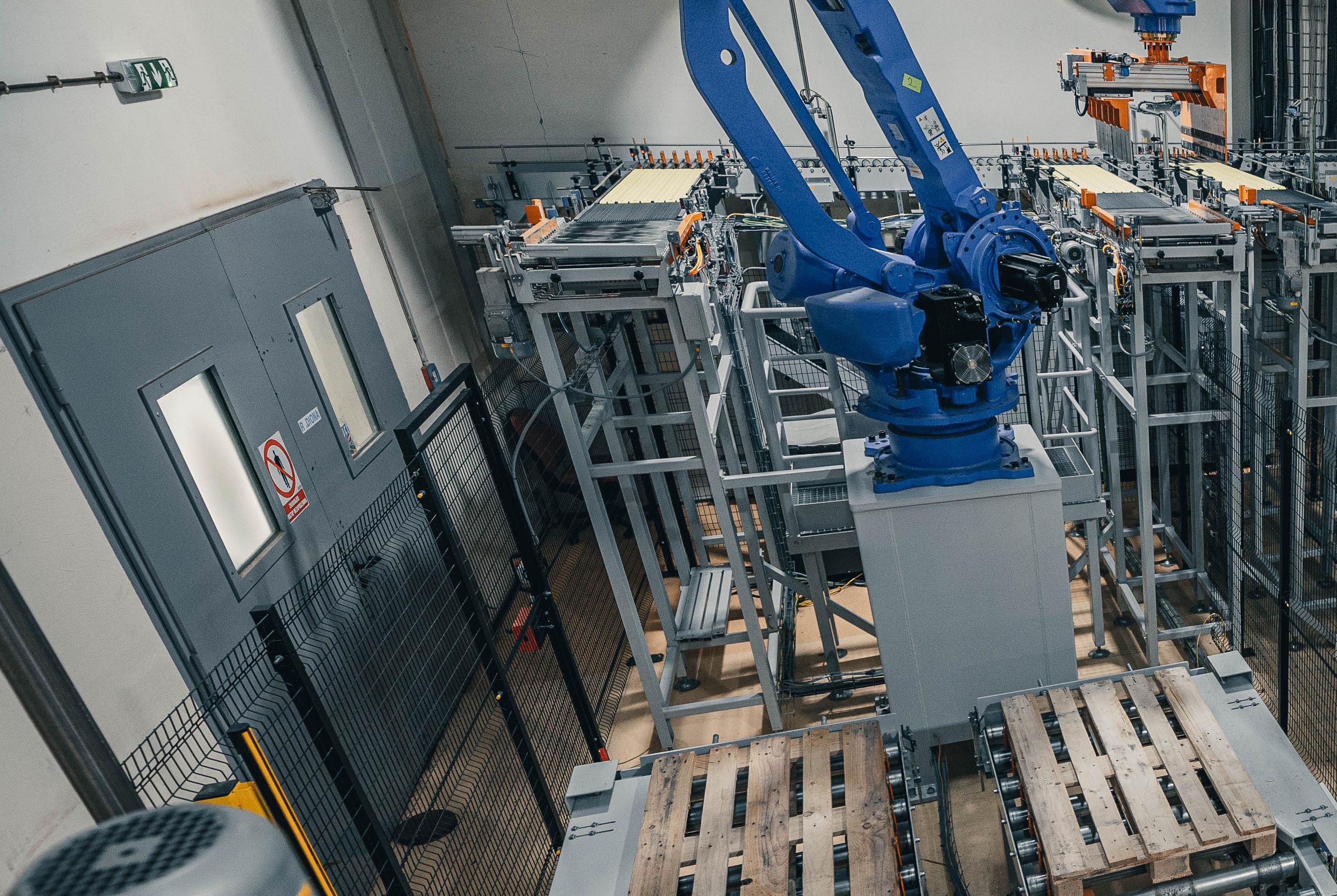

We have one of the biggest solar plants in the country. Our five-year plan is to have 90 to 95 per cent of our energy produced in-house
 LEAN DIGITALISATION GREEN
by solar and biomass in our main production zone.”
LEAN DIGITALISATION GREEN
by solar and biomass in our main production zone.”
The vision for continuous improvement means Manuel is always looking at what is coming next. He concludes, “Digitalisation and technology are running through Podravka, but due to the age of the company, it is always

with a human approach. This is exactly what Industry 5.0 is about, putting the people at the centre. We have to slowly show them that technology can improve their work and their lives, which is not so easy. It is something you have to do continuously.”
For further information on Podravka, visit www.podravka.com
47
“Culmena understands the mentality of the Croatian people, so we are able to take a psychological approach to slowly convincing them that these changes are for the better”
The Biden-Harris administration’s country’s transportation system where no other administration


TRANSPORTATION
administration’s blueprint to clean up the system steers the US in a direction administration has dared to go.


he blueprint sets out plans to eliminate almost all greenhouse gas (GHG) emissions by 2050 in the transportation sector, a bold move since the sector is the largest source of GHG emissions in the US.

Published in January 2023, the blueprint will shake up the US transportation system. Transportation forms the backbone to

the nation’s economy and connects people, countries and cultures.
But it also contributes to a climate crisis that is worsening the quality of life in cities, towns and rural communities throughout America. The US National Blueprint for Transportation Decarbonisation addresses ways to provide better transportation options, expand affordable and
America’s love affair with the combustion engine is a relationship of necessity: the opening lines of the US National Blueprint for Transportation
Decarbonisation admit as much.




accessible options to improve efficiency, and how the nation can manage the transition to zeroemission vehicles and fuels. Achieving the goals will require close cooperation with industry, local, regional, state, and Tribal governments, non-profits, and other stakeholder groups, as well as allies around the world, it is clear. But bold action will result in a clean transportation system that is safe, secure, accessible, affordable, and equitable, for all Americans to help create a more sustainable future for generations to come, it states.
Here is a summary of how the blueprint will lead the country towards those goals.
>>> Light duty vehicles
Currently cause 49% of transportation emissions
GHG emissions targets

• 50% of new vehicle sales will be zeroemission by 2030, with a supported pathway for full adoption. New internal combustion engine vehicles will be as efficient as possible.
• 500,000 EV chargers will be deployed by 2030.
• 100% federal fleet procurement will be zero-emission by 2027.

>>> Medium and heavy-duty trucks and buses
Currently cause 21% of transportation emissions
GHG emissions targets
• 30% of new vehicle sales will be zero-emission by 2030 and 100% by 2040.
• 100% federal fleet procurement will zero-emission by 2035.
>>> Off-road vehicles
Currently cause 10% of transportation emissions
GHG emissions targets
• More work is needed to establish specific targets.

• Resources will be focused to develop technology pathways and set efficiency and zero-emissions vehicle and equipment targets.

>>> Rail
Currently causes 2% of transportation emissions
GHG emissions targets
• More work is needed to establish specific targets.
• Resources will be focused to develop technology pathways and set efficiency and zeroemissions vehicle targets.
• Greater use passenger and freight travel will be encouraged to reduce emissions from road vehicles.

>>> Maritime

Currently causes 3% of transportation emissions
GHG emissions targets
• Support will continue for ZeroEmission Shipping Mission (ZESM) goals to ensure that 5% of the global deep-sea fleet is capable of using zero-emission fuels by 2030 and that least 200 of these ships primarily use such fuels across the main deep sea shipping route, and 10 large trade ports covering at least three continents can supply zero-emission fuels by 2030.
"The blueprint sets out plans to eliminate almost all greenhouse gas (GHG) emissions by 2050 in the transportation sector"
• More research development and demonstration (RD&D) will go into sustainable fuels and technologies to support the US domestic maritime sector and to incentivise US commercial vessel operators to move towards lower GHG emissions.
• There will be more work with countries in the International Maritime Organisation to adopt a goal of achieving zero emissions from international shipping by 2050.
>>> Aviation
Currently causes 11% of transportation emissions
GHG emissions targets
• To reduce aviation emissions by 20% by 2030 when compared to a business-as-usual scenario.
• To achieve net-zero GHG emissions in the US aviation sector by 2050.

• To catalyse the production of at least 3billion gallons of sustainable aviation fuel (SAF) per year by 2030 and around 35bn gallons by 2050 – enough to supply the entire sector.
>>> Pipelines

Currently cause 4% of transportation emissions
GHG emissions targets
• To continue work to establish specific targets.
• By 2036, repair or replace 1,000 miles of high-risk, leak-prone,
community-owned legacy gas distribution pipeline infrastructure, as well as an estimated reduction of 1,000 metric tons of methane emissions.
• To continue to eliminate leakages and enable use of pipelines for clean sustainable fuels.
= GRAND TOTAL

Sector total 100%
GHG emissions targets

• 80–100% emissions reductions by 2050 (in line with the US LTS).
Source: The US International Trade Administration supply chain services
Assortment
Optimisation & Automatic Replenishment
Arthur Caron, Supply Chain Director at Franprix, shares his company’s exciting vision for the future.


BUSINESS INTERVIEW


Franprix is a French convenience store chain, headquartered in Paris and owned by Casino Group.
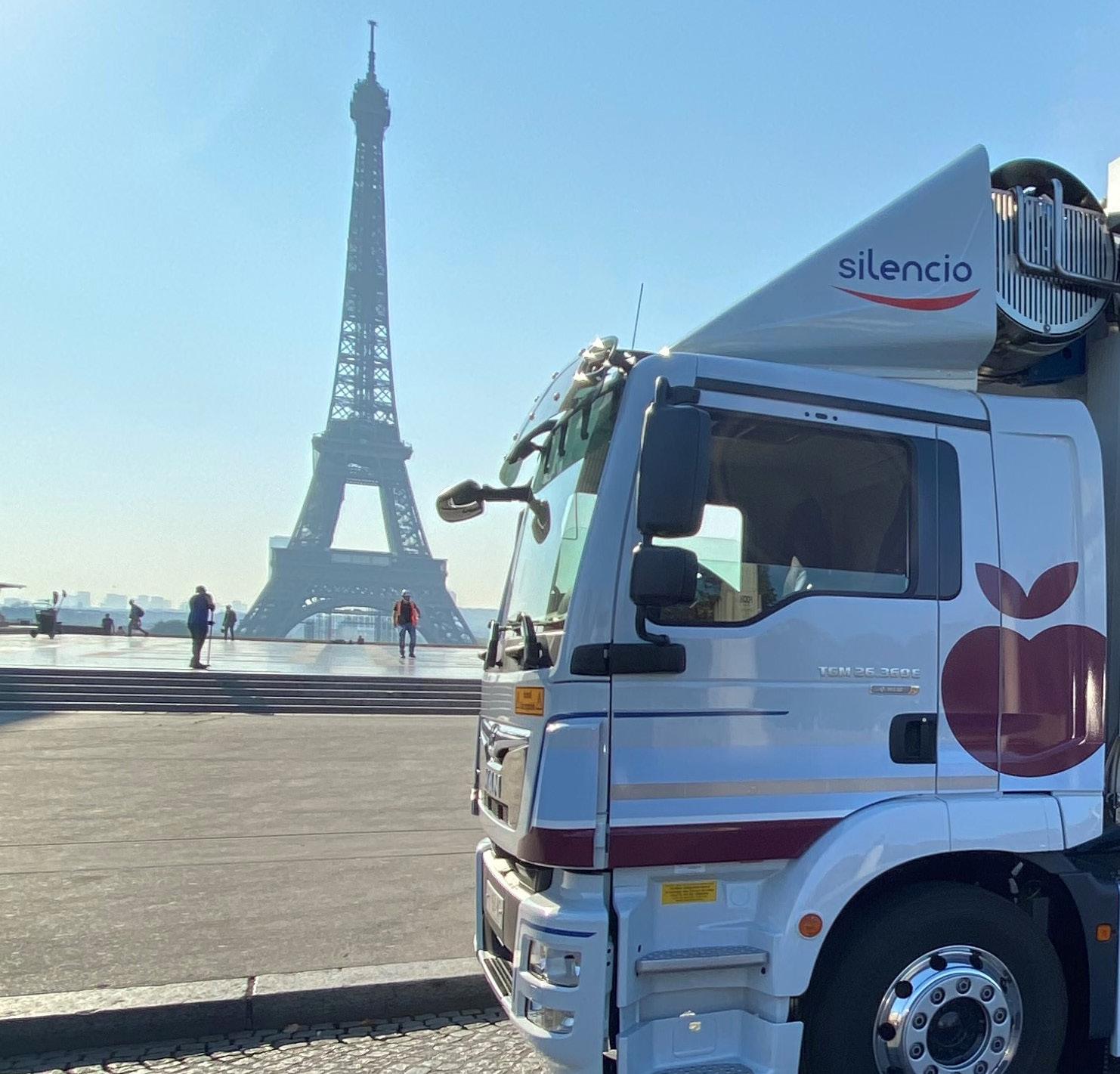
60
Supply Chain Director
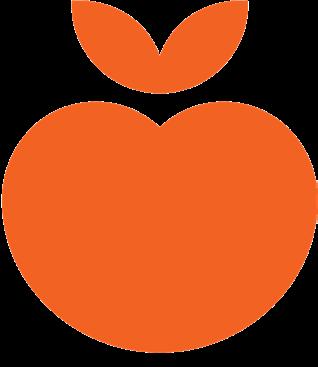
Arthur Caron has been at the company for around six years, and is responsible for both the upstream and downstream parts of Franprix’s supply chain. He explains, “My team and I deal with the products from suppliers coming into our warehouses, making sure
we have the right inventory and stock available for the stores to order. On the other side, we drive the order process from the stores to the warehouse, supporting them with their orders, whether that is through automatic solutions or manual processes, so they are able to sell all the products that they need to sell.”

61
With four warehouses to its name, Franprix’s supply chain strategy is based on simplicity, but there are a number of challenges in delivering to central Paris each day. Arthur continues, “Most of our stores are in the same region within Paris, but we are talking about replenishing

small convenience stores in a densely urban area. When it comes to our strategy, we need to deliver almost on a daily basis because the convenience stores are roughly between 150 and 600 square metres in size, so there is no room for local storage. It is about frequent deliveries of small quantities, so the supply chain strategy has to be extremely intricate and precise. You cannot afford to make mistakes regarding delivering the right products to the right stores on time. You need to have an agile supply
chain to do that, and this is where Franprix excels.”
Franprix’s warehouses are situated close to Paris, where most of its convenience stores are located, which enables it to make daily deliveries. Once an order from a store has been received, fresh and ultrafresh products can be delivered within 24 hours (sometimes 12 hours), and dry products can be shipped within
62
“One of our strengths is our ability to deliver in a dense area whilst avoiding traffic jams; for 10 years we have been using a barge to transport goods down the Seine from our warehouse just outside of Paris”
36 hours. Arthur enthuses, “One of our strengths is our ability to deliver very quickly, compared to our competitors. Part of our urbanisation strategy was to find the right path through cities to efficiently navigate dense traffic, working closely with local authorities. Being first to do so in Europe, we have been using a barge for 10 years to transport goods down the Seine from our warehouse just outside Paris. The containers are offloaded in front
of the Eiffel Tower onto small delivery trucks at around 5am each morning to deliver to more than 300 Parisian stores.”
The customer experience is front and centre of Franprix’s supply chain strategy. Arthur says, “With convenience stores, people tend to purchase small items here and there on a daily basis. At Franprix, the average basket is around 12 euros, and there is

63

64
a store every 300 metres within Paris. From a supply chain perspective, we aim to supply everything people will need at a given time. We have to offer a wide assortment within small stores, which is not easy, so we must replenish stores with exactly the right SKUs that the customers need whilst ensuring that we are not providing products that do not meet their requirements. For the optimisation of our assortment, it is important to be precise on what we are fulfilling to the stores.”
With more than 10,000 SKUs in its warehouses, Franprix is confident that it can make the right selection for each store. Arthur adds, “Based on a centralised recommendation, each store tends to have its own assortment, so we have to be sure that we don’t just replenish the right amounts, but that we select the right assortment for the right store based on its customer base. We adapt
the assortment by analysing the customer purchases and behaviour in a particular neighbourhood.”
So, what are Franprix’s plans for future growth? Arthur answers,
“For the next four years at least, our strategy will be growth-focused. We feel that tomorrow will be centred around convenience stores and online retail, so we are planning to open more convenience stores (250 stores per year), doubling the size of Franprix within the next five years. We would also like to address other regions, expanding to the suburbs around 30 kilometres from Paris and across the Rhone corridor. We believe there is room for convenience stores in this area, as well as the big French cities such as Lyons, Marseille and Bordeaux.”
The challenge that Arthur faces is that all of Franprix’s warehouses are based around Paris. He explains, “Any
65
“For the next four years at least, our strategy will be growth-focused. We feel that tomorrow will be centred around convenience stores and online retail”
new store outside the Paris region is a challenge. There are no plans to open new warehouses right now, so we will do our best to optimise the current network. We could also benefit from using other warehouses within the Casino Group.”
Franprix’s online activity is based on a ship-from-store model, leveraging its great assets within city centres. Arthur adds, “We are steps from our customers, so they can order online and receive their delivery within 30 minutes. We are
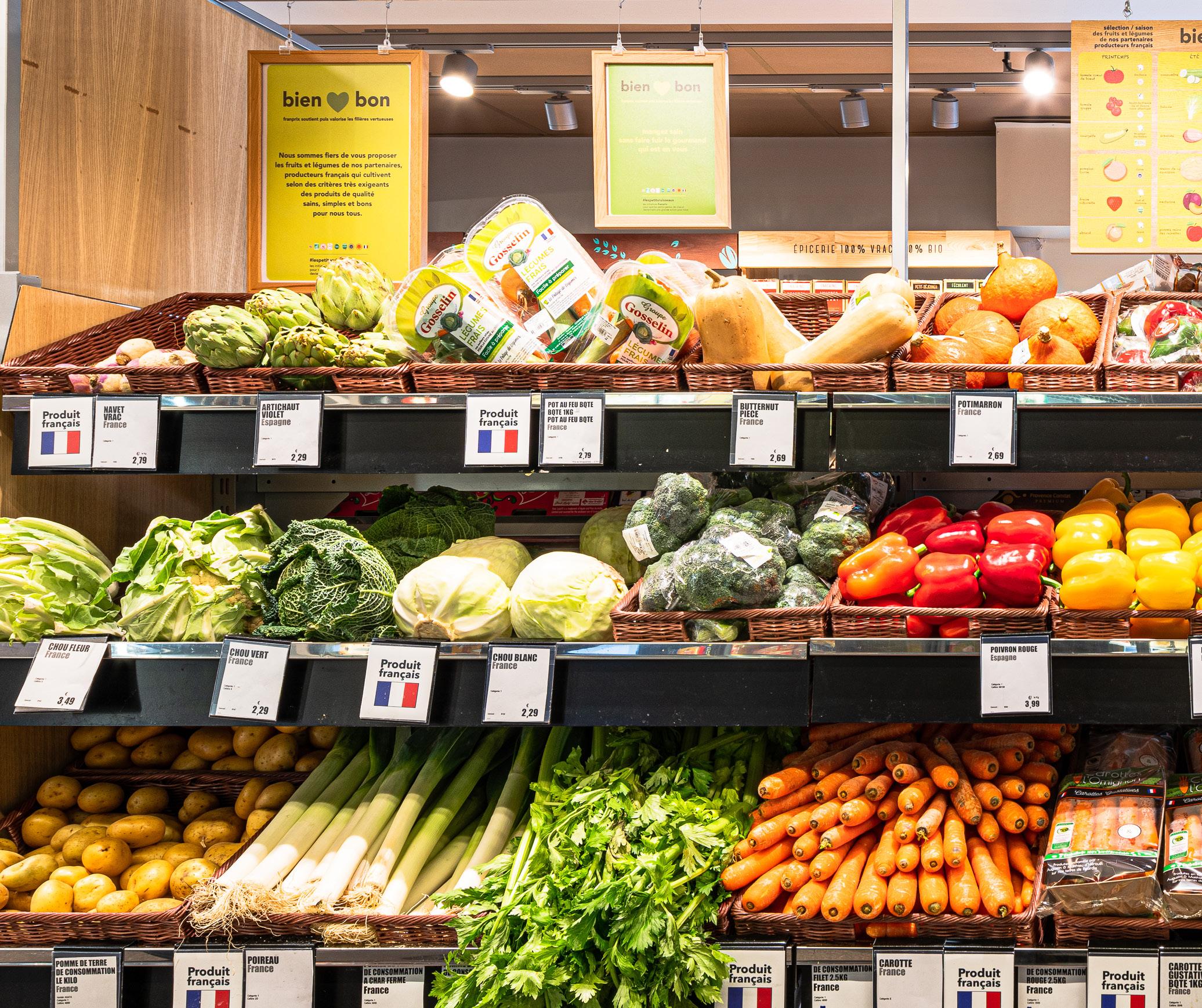
66
“Relex helps us to select the most efficient assortment for each store”
working on this model because we would like to increase online retail sales from 3 to 10 per cent.”
For Arthur, you can have the best technology and digital experience, but it will not work if you do not have the right operational excellence when it comes to delivering the order to the customer. He adds, “We are going back to basics by looking at the
process and making sure we are doing what we say we will.”
There are a couple of key projects that are exciting Arthur at the moment around automatic store replenishment. He says, “We have more than 1,000 convenience stores, and a quarter of them are on a centralised automatic replenishment platform provided by our partner Relex Solutions.
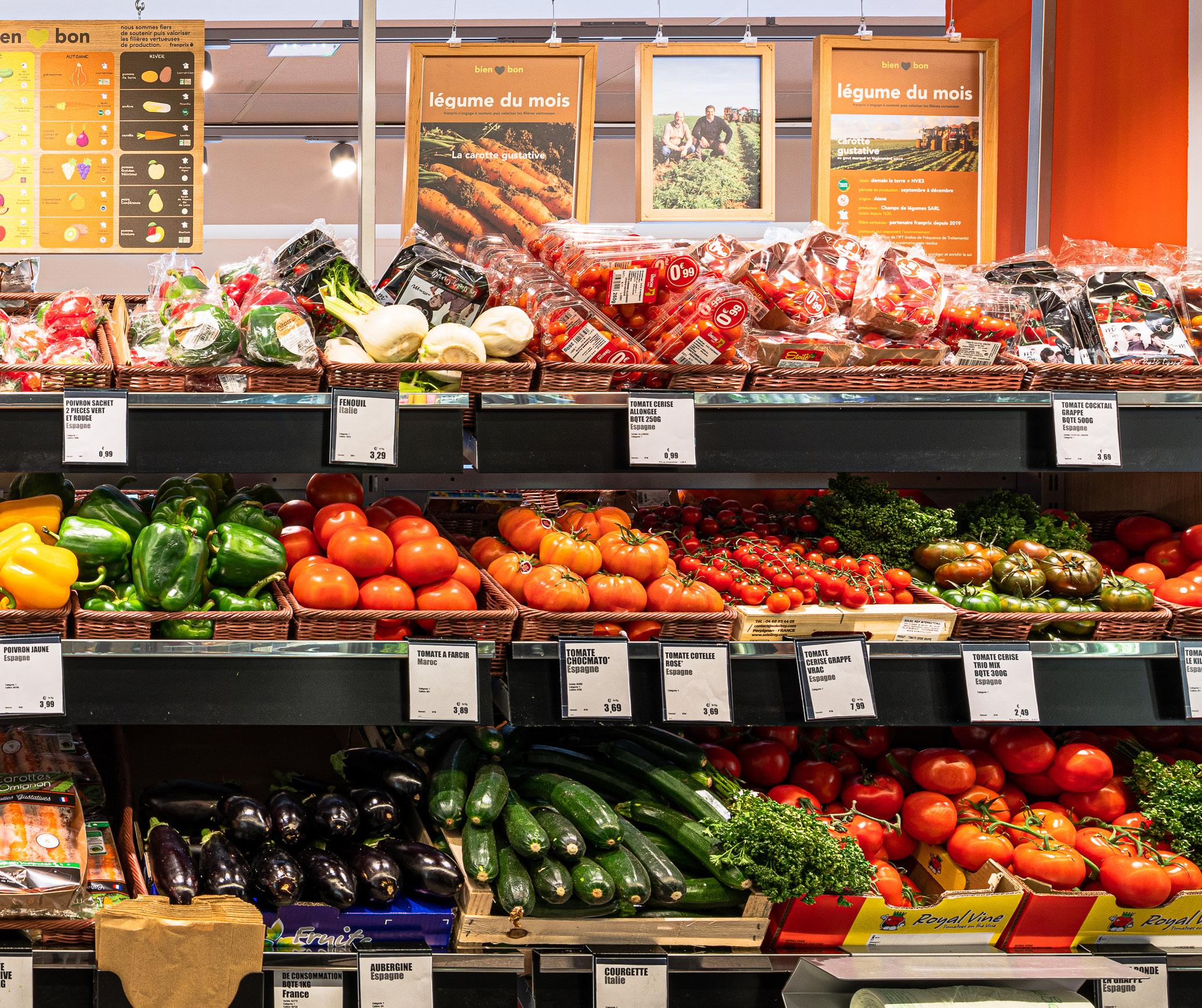
67
Case Franprix Improving Operational Efficiency through AI-Driven Forecasting and Replenishment
A leading convenience store retailer, Franprix has some 900 store locations throughout France, mainly around the Paris area. While the majority of these locations are franchised, about one third are centrally owned and operated.
The Challenge: Decentralised Ordering Led to Operational Inefficiency
Franprix’s replenishment process was decentralised and time-consuming, with store associates placing replenishment orders manually. A lack of optimisation led to unnecessary stock-outs, waste, or over-stock. This decentralised ordering model also led to delivery peaks on their typically high-volume weekends, causing capacity issues in both stores and the distribution center. Store personnel struggled to replenish shelves and deliver customer service at the same time, while excess stock often spilled out of crowded back rooms onto sales floors.
Realising their business could no longer be supported by their existing processes, Franprix sought a supply chain solution that could:
• Automate previously manual store ordering, including for challenging fresh products
• Optimise forecasting and replenishment to increase availability and reduce food waste
• Increase operational efficiency by leveling out the flow of goods into stores so that store personnel could focus on clients and added-value services
Change Management Was Key to Rapid Transformation
Embarking on an ambitious supply chain transformation initiative, Franprix evaluated RELEX through a fresh replenishment pilot in three stores and, after strong results, chose RELEX to provide their 270 centrally managed stores with AIdriven forecasting and replenishment. They were compelled by the ability to optimise forecasting and replenishment for short shelf-life products like fresh bread to increase availability and reduce food waste.
“We were a bit late in automating forecasting and replenishment compared to our main French competitors,” admitted Franprix’s Head of Operational Excellence Arthur Caron. “However, this allowed us
to move straight on to using the latest technology available, which gives us a clear competitive edge.”
Preparing for a technological step-change, Franprix developed a cohesive change management plan that ensured employees developed trust in the new tool and processes. During the roll-out phase, the company assigned up to ten “on-the-ground” employees to travel continuously to Franprix stores and speak with store managers. Mostly former store managers themselves, these change management facilitators were able to understand and speak directly to store personnel’s concerns and wishes—a key part of any change management project that is too often bypassed.
Franprix also assigned more than ten central employees to respond to store personnel during roll-out, checking store-level sales and other data in RELEX to quickly answer staff questions and adjust system parameters as needed. Much of the success of their RELEX implementation can be attributed to the investment they made in bringing store personnel on board. It took time, but it was worth it.
Results
Results at a Glance
• 67% decrease in stockouts
• EUR 1.7M (USD 2.2M) reduction in inventory value
• 30% decrease in product spoilage
• 2 pp margin improvement
Due to their thoughtful change management campaign, Franprix has seen remarkable improvements from the adoption of RELEX. The solution’s AI-driven demand forecasts have improved replenishment accuracy by automatically capturing store-SKU-level sales patterns impacted by weekday variation, seasonality, market trends, and even local weather forecasts.
The ability to leverage machine learning algorithms

68
Watch a RELEX Demo
to automatically calculate the impact of weather data on demand has proven quite valuable for Franprix, as the impact on products and stores varies depending on a store’s location or customer base. “I noticed on the news that a heat wave was coming and thought to myself ‘shoot, I should have seen this earlier, I need to let my planners know,’” said Caron. “But when I reached out to the team, they told me not to worry. RELEX had already adjusted our forecasts based on the latest weather forecast.”
Forecast accuracy also drove improvements in store replenishment. Though Franprix stores are small, they carry a large inventory of fresh products, including meat and fish, salads and sandwiches, bread, and dairy. Taking store-level demand data into consideration, RELEX automatically optimised Franprix’s fresh and ambient product replenishment, reducing stockouts by 67%, fresh food waste by 30%, and inventory value by €1.7M.
Franprix has also benefitted from RELEX’s proactive “delivery flow smoothing,” which autonomously considers future order projections and pulls orders for long shelf-life products forward to smooth out flow of goods. With a more level, manageable flow of goods into stores, they no longer experience overwork and stress from store personnel having to replenish shelves while also meeting customer needs during footfall peaks. The risk of congesting small stores with big deliveries is much lower, and they’ve also seen improvements in DC capacity management, which was struggling with more than 500 stores placing their largest order of the week every Friday. This smoothing helped reduce DC workload by 20% on Fridays.

Improved store replenishment
RELEX’s AI-driven demand forecasts allowed Franprix to increase product availability and reduce food waste.




Beyond forecasting and replenishment, Franprix has leveraged RELEX’s powerful analytics for continuous assortment optimisation. The system monitors each SKU’s sales and profitability and automatically provides recommended assortment adjustments for each store on a weekly basis. Franprix is now able to quickly excise poorly performing products and replace them with products that both better meet local demand and maximise store profitability.
“RELEX’s flexible automation makes it simple and straightforward to implement changes in accordance with our company strategy,” said Caron. “I continue to be impressed by the flexibility. The range optimisation that we do with RELEX, for example, would not have been possible with any other tool.” Using that same flexibility, Franprix has been able to analyse and systematically drive down stock for long-tail products as well.
As Franprix looks to the future, that flexibility will serve them well as they continuously adapt their supply chain practices to the dynamic conditions of modern retail. RELEX will help them evolve their business well into the future, but RELEX’s team will also be there every step of the way. “The collaboration with RELEX is a true partnership,” said Caron, “and we’re going to make incredible strides together for years to come. We have many projects in mind!
Advanced assortment optimisation
Franprix is now able to maximise store profitability by leveraging RELEX’s powerful analytics in replacing poorly performing products with products that better meet local demand.
69
Meet us at Euroshop! February 26 - March 2, 2023 Düsseldorf | Hall 6 / 6C24 Register Now
“This means each store doesn’t have to place an order, but software gathers and analyses the data, making a forecast based on the stock, sales and delivery expectations, to avoid any shortages and maximise sales. It is a very efficient way to replenish the stores. The software works with three years’ worth of historical data, so it can notice trends and events at
certain times of the year, specific to each SKU within each store. Relex also provides external data for automatic replenishment purposes, such as customer behaviour based on the weather. It is all about the machine estimating what a human would have done manually.”
When it comes to assortment optimisation, Relex assists in selecting the right products for

70
each store to meet the local customer demands. Arthur explains, “Relex helps us to select the most efficient assortment for each store. On a weekly basis, the software detects the products that are not efficient enough by analysing the sales, pricing and cost, suggesting which SKUs should not be replenished because they are taking up too much valuable
space. If a product is performing well in a similar store, you have the opportunity to optimise the store assortment by replacing it with this SKU. It is a step-bystep process, leveraging the personalised data for each store.”
For the 750 stores that are not using automatic replenishment, Franprix is working on a new tool to allow them to order products from the warehouses more easily. Arthur elaborates, “In a nutshell, we want to give stores a full B2C customer experience using the website for ordering from the warehouses. It is about creating an enhanced, interactive online experience and customer journey with relevant images, product descriptions and order suggestions based on popular products and the store’s order history. The stores that order every day want something easy to use that taps into their everyday technology use. That is our vision, but it is still very much early days.”
With so many fantastic projects in the pipeline, we look forward to seeing Franprix’s future plans come to fruition.
For further information on Franprix, visit www.franprix.fr

71
CAROLINE CIOE
CAROLINE CIOE

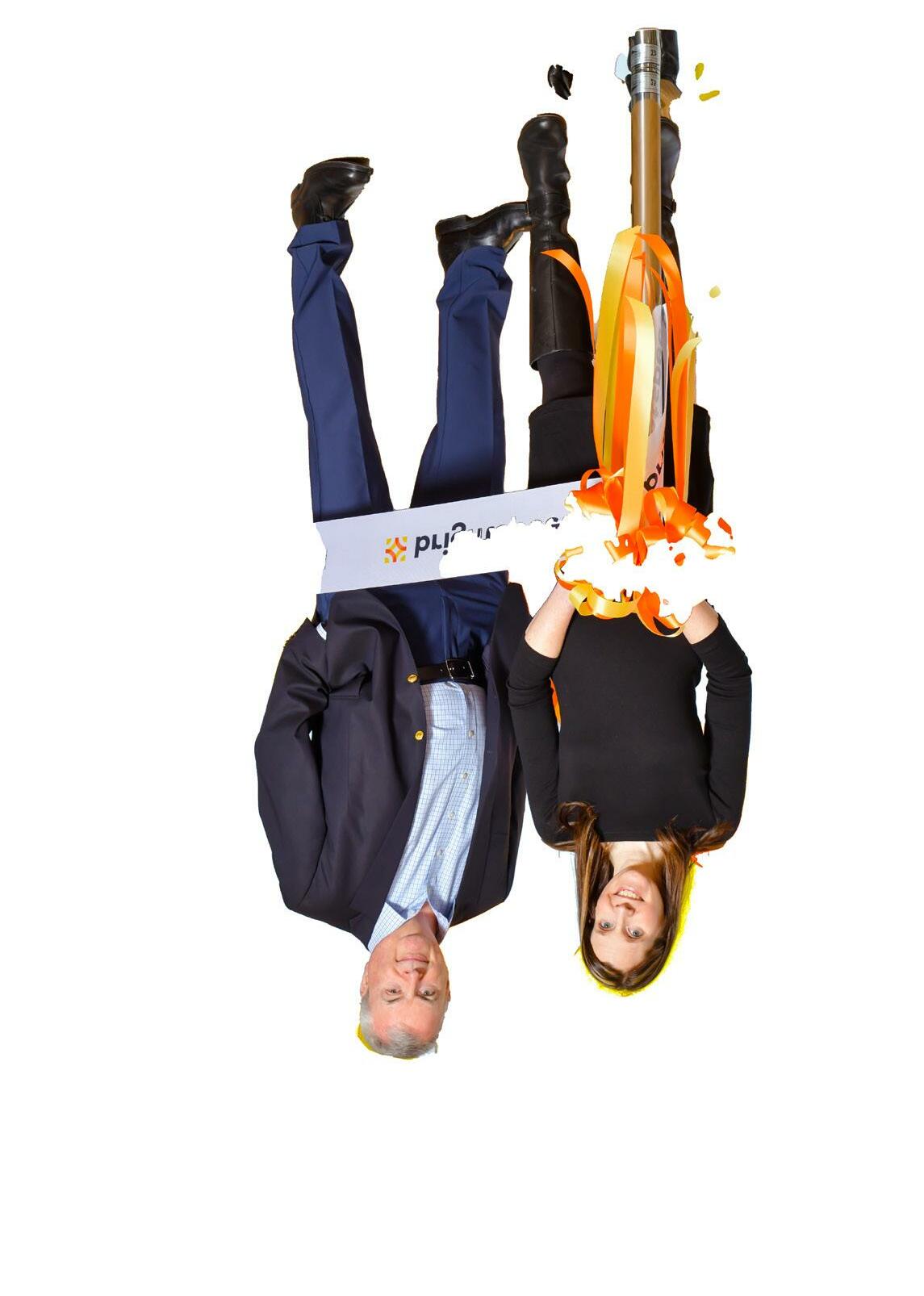

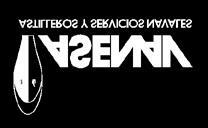
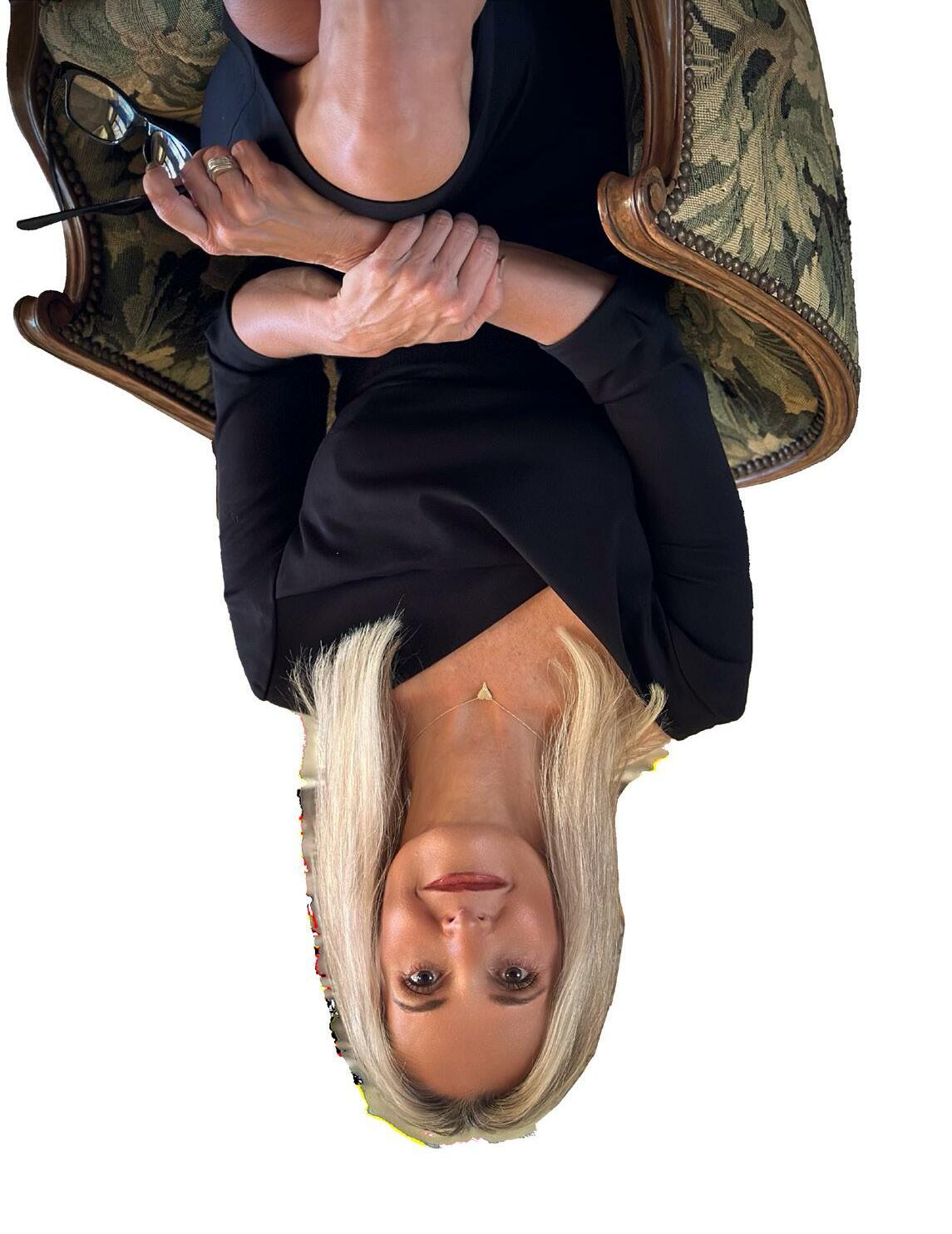











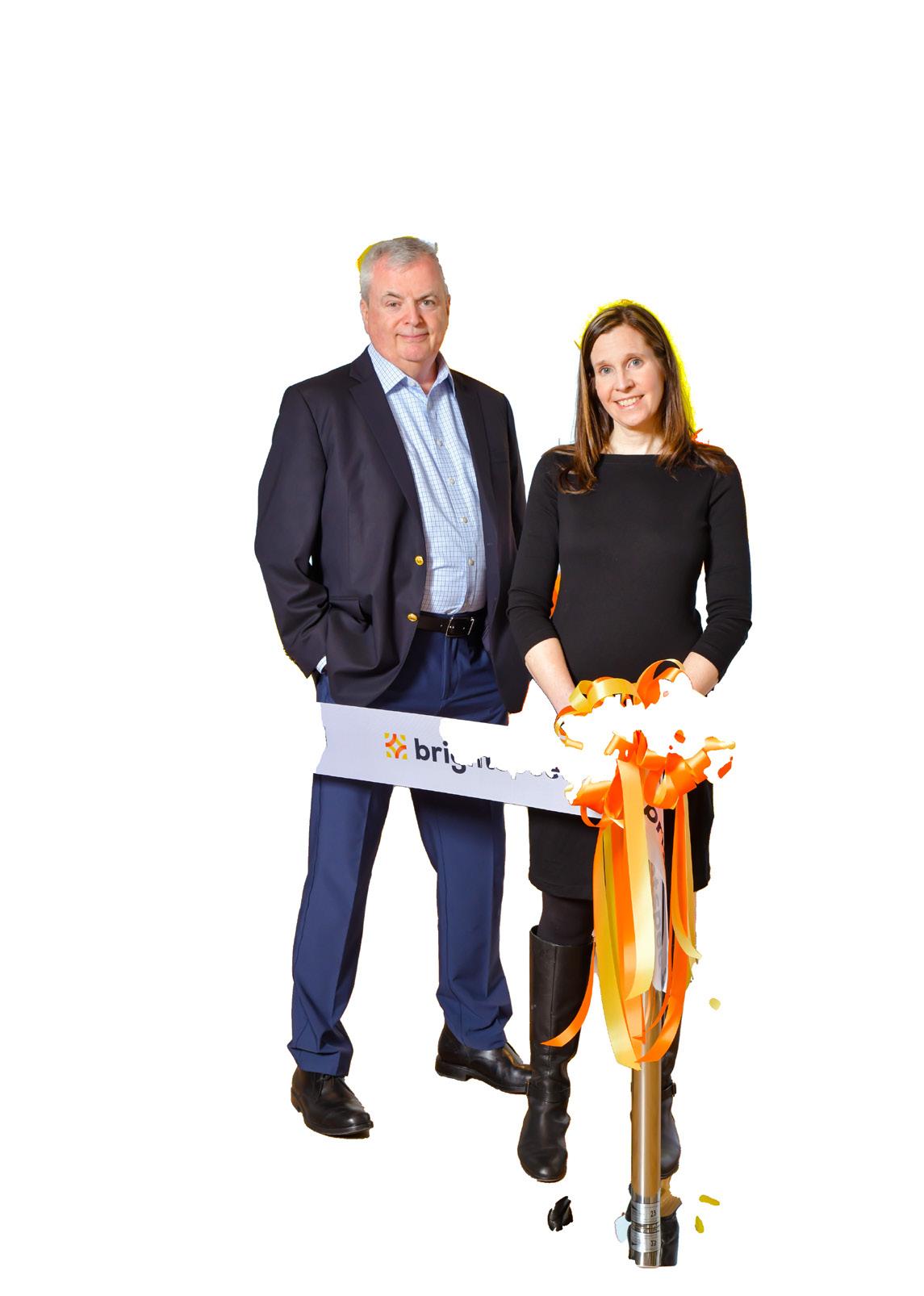






72








73 CIOE CIOE
by NEVER MISS AN ISSUE SIGN UP FOR FREE! SUBSCRIBE
Produced

RESILIENCE & AGILITY
The textile industry is facing up to supply chain challenges by innovating its technology, looking for new resources and improving environmentally friendly practices.

AS A GLOBAL BUSINESS THE TEXTILE INDUSTRY IS COMPLICATED, BUT IT IS TURNING TOUGH CHALLENGES INTO A POSITIVE ECONOMIC BENEFIT BY SOURCING PLANT-BASED ALTERNATIVES TO PETROCHEMICAL FIBRES.


The cellulose fibre market is set to post healthy growth over the next four years, according to leading analysts. In January 2023, market research company Technavio announced predictions that Asian Pacific (APAC) countries will contribute 40% of the sector’s market growth over the next
four years. The market growth for cellulose fibre worldwide is expected to top $15million and Technavio projects a compound annual growth rate (CAGR) of 9.18% during the forecast period.
Textiles are used in a wide range of applications from clothing, furniture and furnishings, to automotive interiors, medical


dressings and more. The industry crosses continents, since an item can be made from raw materials grown or manufactured and spun into fibre in one country, then woven and dyed into a fabric in another. A designer working in Europe selecting a fabric to suit their product could have it shipped from a warehouse in India, cut, sewn and finished in Hong Kong, and transported to retailers anywhere in the world, from where it will go on to customers.
Fashion alone has an estimated global market value of €1.5trillion, and the fashion and textile industry employ 430m people, or around 1 in 8 workers globally, according to figures compiled by PwC, the global professional services firm. Many industries have a goal of zero waste to landfill, and use technology to help with that quest, but few are as high profile as textiles and fashion. Knowing that cheap garments are made in sweatshop factories, then discarded after a short lifespan, has guilt-tripped customers into changing their habits. PwC calculates that the resale, rental and secondhand markets will


become almost twice as large as fast fashion by 2029.
Cellulose fibre has been making headlines because, although it encompasses both natural (eg cotton, hemp and linen) and manufactured (viscose, rayon, Lyocell and modal) textiles, it is a more environmentally friendly choice than many other materials. At the end of its useful life, a cellulose fibre can be composted because it is 100% biodegradable, unlike plasticbased fibres that can take 100 years or more to decompose. But not all cellulose fibres are equal. Lyocell, which is created from wood cellulose, most often eucalyptus, can also be made of oak, bamboo and birch. The process takes around 150 minutes from chopping


“CELLULOSE FIBRE HAS BEEN MAKING HEADLINES BECAUSE, ALTHOUGH IT ENCOMPASSES BOTH NATURAL AND MANUFACTURED TEXTILES, IT IS A MORE ENVIRONMENTALLY FRIENDLY CHOICE THAN MANY OTHER MATERIALS”
the wood to carding, and uses less energy and water than other processes. The synthetic chemicals needed during the manufacture are recycled in a closed loop – ie recycled and reused with little loss. Viscose, a similar plant-based fabric, generates by-products, according to the Lyocell information hub. On the downside though, Lyocell’s specialised production makes it pricier.

Even traditionally natural fabrics may not be as eco-friendly as
they seem. CottonUP, a guide to sourcing sustainable cotton, says farming practices vary hugely depending on geography. In the US, Australia and Brazil, cotton is farmed and weeded largely using mechanised technology and systems, but in places like India and Mali, much of the work is done by hand. Cotton is also a hungry crop, using 3,644 cubic metres of water per tonne and tends to need a lot of pesticide and fertiliser as it grows. By contrast, eucalyptus trees are unfussy about their soil conditions,

do not need irrigation or pesticides, and use five times less land than cotton. Lyocell fibres produce fabric that is soft, like silk, does not wrinkle and is both strong and flexible (it is used for conveyor belts and medical dressings, for example) and it can be blended with other fibres.


No wonder global production is expected to reach more than 830kg tonnes by 2027.
Though seen as the next big thing, cellulose fibre and textiles will still have to meet international regulations and standards as they
“LYOCELL FIBRES PRODUCE FABRIC THAT IS SOFT, LIKE SILK, DOES NOT WRINKLE AND IS BOTH STRONG AND FLEXIBLE. NO WONDER GLOBAL PRODUCTION IS EXPECTED TO REACH MORE THAN 830KG TONNES BY 2027”


TO
SNEAKERS/TRAINERS UNDER A NEW PROCESS – MICROBIAL WEAVING”


are being developed. Technavio’s report, which offers information about 15 market vendors and textile manufacturers across the world, points out that in the US, the use of cellulose fibres is monitored and regulated by the US Environmental Protection Agency (EPA) and the US Food and Drug Administration (FDA). In the EU, this falls within registration, evaluation, authorisation and restriction of chemicals (REACH) regulations.
Source: www.newsroom.technavio.org/ news/cellulose-fibermarket
That has not stopped scientists looking for new sources of cellulose, and one that is particularly innovative is the production of nanocellulose, which can be extracted from algae, bacteria, fungi and invertebrates. Start-up company Modern Synthesis recently used bacteria from agricultural waste to create prototype sneakers/ trainers under a new process –microbial weaving. The team behind the company made the uppers by growing bacteria into a scaffold in a manner like 3D printing. Modern Synthesis is unlikely to have any short-term impact on the world’s global trainer/sneaker market, which is predicted to be worth $102bn by 2025, but every journey begins with a first step.
“MODERN SYNTHESIS RECENTLY USED BACTERIA FROM AGRICULTURAL WASTE
CREATE PROTOTYPE
Experiencing End2End Digital Supply Chains with SAP and their Partners

The senior executives who manage the SAP Digital Supply Chain organisation in Middle and Eastern Europe (MEE) provide us with insights into the enabling power of digital solutions, collaboration and technology. As they align these hot topics to SAP’s expertise, capability, and partnership-led approach to solving challenges, they lead us through the key trends and opportunities of 2023.

Digital Supply Chain MEE
Andreas J. Wagner, and Chief Operating Officer for Digital Supply Chain MEE
Dr. Johannes Tulusan deliver their cautiously optimistic view of the year ahead.
AP’s optimism is founded in business projects that were planned and being executed long before the current economic shakeup. Across SAP, teams are looking to improve the solutions they already offer clients, switching from on-premise to cloud-based options, for example, and demonstrating how to increase product traceability and improve environmental, social and governance (ESG) performance.
Dr. Johannes Tulusan remains cautiously up-beat and explains, “You have to see the glass half full. Global circumstances might not improve in the near-term, but they give decisionmakers the chance to rethink how to operate their business. Resilience in supply chains is already very important, and sustainability will definitely become important too. We at SAP are in a good position to support our customers on those fronts.”
Andreas J. Wagner starts his assessment by saying that supply chain visibility and supply chain flexibility are key differentiators in business. “The supply chain function is not a backoffice function any more,” he explains. “It can either be a source of strength or weakness. Think about the loss of sales because of stockouts and the loss of loyal customers.”
He continues, “It has really become a strategic topic for our customers. Championing the design to operate process in the market can be a key differentiator because you will have digital and integrated processes and can really showcase the end-to-end value of the solutions within your key processes.”
This is about not only innovating and breaking down silos within a company, Andreas states. “You also need to standardise your connections with
86
There is a feeling fizzing out of SAP right now: enthusiasm. SAP’s SVP and General Manager of
the outside world,” he says. “It's a very important process. For example, in the area of design innovation you already need to check early in the process whether the necessary suppliers are
available and whether they can support needed quality and quantity before you even produce master data in an enterprise resource planning system,” he says. “And you also need

87
Dr Johannes Tulusan Andreas J. Wagner
Camelot’s Supply Chain
Resilience Center is not only sustaining and improving our business processes every day but also working with us towards our goal of achieving a balance between supply chain maturity and supply chain operations cost.
Claud Noh, Corporate CIO / Vice President at Zinus
End-to-end Digital Supply Chain Transformation

A Key Success Factor in the New Now
To achieve an efficient, agile, risk-resilient, and sustainable supply chain, organizations need an end-to-end process vision, and they require to embrace cloud innovation cycles to enable continuous improvement.
Supply chain issues are in the spotlight right now – disruptions, material shortages and rising costs made it abundantly clear that today’s supply chains have become more complex and hyperconnected than ever. Often, when disruptive events occur, the result is a reactive and uncoordinated response that puts achieving margin, profitability, sustainability, and service level goals at risk.
Digitalizing the Design-to-Operate Process
The new supply chain complexity requires close collaboration between lines of business and stakeholders as well as transparency and flexibility across the supply network, making it mandatory to have enterprise systems to be digitally connected, coordinated, and operated. This constitutes a so-called intelligent enterprise. In the context of supply chain this means digitalization of processes from Design to Operate (D2O).
The overall goal of D2O is to be resilient to adapt to the next threat and to be flexible to embrace the next innovation. It starts with how you design new products in an innovative way, followed by a resilient planning process that drives sustainable manufacturing and logistics to deliver products to your customer and ultimately, maintaining these products.
As a long-standing implementation partner of SAP with more than 25 years of experience, Camelot ITLab supports customers on their journeys to realize the full potential of SAP Digital Supply Chain solutions. "In our experience, the key to every successful transformation is to follow this end-to-end vision for D2O processes and to cover all aspects from strategy to process, implementation, and continuous improvement," says Aseem Gaur, Executive Vice President at Camelot ITLab.
The digital transformation to build resilient supply chains is a continuous process and customers require, both an innovative solution and services approach to support this journey.

INNOVATIVE SOLUTION APPROACH
INNOVATIVE SERVICES APPROACH
Innovative Solution Approach: Smart Factory at Kellogg’s Realizing the value of SAP Digital Manufacturing Suite

One such innovative solution approach is the development of accelerators and extensions to the SAP solution portfolio on SAP Business Technology Platform (SAP BTP) in order to address industry challenges and augment SAP functionality. Following this solution approach, Camelot is realizing Kellogg’s Smart Factory vision by leveraging SAP Digital Manufacturing Suite and extending existing functionalities with industry specific accelerators: contributing to Kellogg’s sustainability goals while at the same time offering tailored industry-specific extensions for organizations.
Another example for an innovative solution approach is to extend SAP Integrated Business Planning (IBP) with cloud-based concurrent Production Planning & Detailed Scheduling (cPP&DS) capabilities
Innovative Services Approach: Supply Chain Resilience Center Embracing resilience and continuous innovation
Realizing the value of SAP Digital Manufacturing Suite powered by Smart Factory
Summary
Accelerating the digital transformation by embracing resilience and continuous innovation
With Supply Chain Resilience Center (SCRC) as innovative services approach Camelot is offering a framework where all stakeholders can collaborate to improve and accelerate delivery of business value. It allows customers to sustain their supply chain transformation on an ongoing basis by addressing key challenges around technology, talent and processes. SCRC was leveraged at Zinus not only improving business processes to be more resilient every day but also facilitating supply chain maturity.
The SAP Digital Supply Chain portfolio offers interoperability between business processes and systems as well as frequent feature updates (cloud-based). Therefore, supply chain transformation is not a one-time activity. Instead, resilience and continuous improvement or adoption must be incorporated into the overall strategy. It is crucial to tackle a digital supply chain transformation with an end-to-end vision in mind. Camelot ITLab offers end-to-end supply chain consulting, services and innovations in the context of the SAP Digital Supply Chain portfolio, thus realizing the Design-to-Operate vision for our joint customers.
to think about how you can quickly qualify a second or a third source in case of supply chain shortages of existing suppliers. You can only become successful with the close collaboration between sourcing and design – so between an internal function and the network outside of the company.”
What software solutions, technologies and strategies do SAP executives deem to be critical for enabling supply chain resilience in 2023? The benefit of cloudbased solutions, Andreas and Johannes agree.

Johannes considers Scandinavia and North America to be well advanced in adopting cloud solutions, while Switzerland is picking up adoption quickly; in comparison, Germany and Austria are somewhat behind. He acknowledges that there are businesses and industries that are not yet ready to use a full cloud approach for a critical key process, understandable when there is a highly automated production line, for example. He says the adoption process starts when there’s a need to improve flexibility or find better ways to address issues such as global supply chain shortages and higher energy costs. As decisionmakers assess the right time to make the switch, they are balancing multiple factors against each other. A cloud approach means embracing change in the way software architecture is hosted. Continuing capital investments in data centres versus new cloud
innovation investments can be quite a big stumbling block, Johannes acknowledges. “Businesses do realise innovating is key to staying competitive,” he says.
Another challenge comes when deciding which cloud software vendor to work with. There are so many newer ones to choose from that finding the right solution for a business’s existing
90
products, processes or production can be difficult without expert guidance.
Johannes says, “Something that seems to be the ‘best’ solution might not actually be easily integrated into, say, an existing application landscape.” This is where SAP’s proven capability, established reputation, experience and network offer
confidence when compared with less well-known “challenger” suppliers.
This is another area where SAP capabilities can add value in terms of cloud services, security and innovation. Together with its strong partner ecosystem, SAP has been helping business leaders respond to a constantly changing world, and recover from supply chain disruptions.

91

Strategic Co-Development Partner of SAP for SAP IBP Supply Chain Planning – Digital Manufacturing –Production Planning & Scheduling – Logistics –Industry 4.0 Innovation. Resilience. Maturity. CONTACT Aseem Gaur · Executive Vice President · asga@camelot-itlab.com Julia Hauri · Strategic Alliances & Sales · jhau@camelot-itlab.com Camelot ITLab GmbH · Phone +49 621 86 298-800 Theodor-Heuss-Anlage 12 · 68165 Mannheim · Germany www.camelot-itlab.com Camelot ITLab is intelligently accelerating and sustaining organizations' end-to-end digital supply chain transformation with innovative solution and services approaches: GET MORE INSIGHTS INNOVATIVE SOLUTION APPROACH Realizing the value of SAP Digital Manufacturing Suite powered by Smart Factory INNOVATIVE SERVICES APPROACH Accelerating the digital transformation by embracing resilience, sustainability and continuous improvement
The advantages of SAP’s partner ecosystem are discussed with the leadership of SAP’s MEE regional digital supply chain partner organisation on page 113.
Considering other challenges to face in 2023, Andreas points out the issues of security and the rise in the number of hacking attempts. “If you have your IT server in the ‘basement’ of your factory, it is at higher risk of hacking right now. There’s also a risk that in the long run you won’t have the right resources any more, or enough IT staff to maintain it overall. We are seeing labour shortages,” he warns.
The lack of data centre knowledge is partly the result of a shift to cloud solutions, and while fewer younger workers are entering the labour market, there are more older workers retiring. The imbalance between generations is affecting many industries and services. In January 2023, the German Chambers of Commerce and Industry (DIHK)
reported that more than half the nation’s companies were finding it difficult to fill vacancies due to a lack of skilled workers. In DIHK’s survey of 22,000 companies, 53% reported such shortages.
Next, Andreas and Johannes highlight the trends of nearshoring (bringing manufacturing operations or supply closer to a company’s headquarters or end customers), onshoring (basing operations in a company’s home country), and reshoring (returning operations to a home nation) as key components to maximising risk-resilient supply chains that are backed by technology.
After the challenges of the pandemic years, the vulnerability of the global supply chain has been further exposed by geopolitical unrest. For a very long time, the focus has been on building lean, low-cost operations that were predominantly offshore, but this left companies defenceless against the supply and demand issues that the
93
“Something that seems to be the ‘best’ solution might not actually be easily integrated into, say, an existing application landscape.” This is where SAP’s proven capability, established reputation, experience and network offer confidence when compared with less well-known “challenger” suppliers”
Dr Johannes Tulusan, Chief Operating Officer for Digital Supply Chain MEE
Synchronized Planning with IBP & PPDS
What to do when turnover and production fall apart?
Economic and political upheavals pose major challenges for companies in all sectors. Buzzwords could be extreme weather conditions, disruptions to important waterways, pandemic-related closures of port facilities or airports, as well as rising energy and commodity prices. However, for a proactive response to short-term and unforeseeable market situations, the classic ERP logistics modules are not appropriate. Such situations call for digitally networked end-to-end solutions that offer maximum transparency and real-time information.

Market researcher Gartner predicted disruptions in the global supply chain as early as 2021. Unfortunately, their forecasts turned out to be more than accurate. To effectively meet these challenges, users need suitable solutions. Although digital tools can’t overcome hurdles, they help to evaluate the risks along the entire value chain realistically, making them transparent and controllable. This optimal balance between responsiveness, delivery, stock, lead times, sustainability (circular economy) and customer satisfaction enables a proactive response to volatile markets.
Getting departments on board
Integrated company planning connects sales, marketing, finance, procurement, and production to optimise costs, service and stock levels. It focuses on all areas of planning, from long-term and strategic planning to medium-term planning and right through to the execution. Segmented and synchronized end-to-end planning to match supply to customers helps to separate demand signals from market noise and facilitate incremental changes in service, inventory and overall equipment effectiveness (OEE). Digital planning transformation, progressive monetisation, integrated business planning (IBP) and scenario modelling by using leading technologies such as robotic process automation (RPA), simulation and artificial intelligence (AI) help to improve forecasting and planning outcomes and reduce the planning effort required.
Rough and fine planning go hand-in-hand
With the experience gained from hundreds of implementation projects with well-known companies from discrete and process-orientated manufacturing, CONSILIO’s experts master all aspects of the supply chain repertoire and know which SAP solutions can be used to successfully meet the challenges ahead – keywords here are, for example, the cloud-based SAP IBP and S/4HANA Manufacturing for planning and scheduling (embedded PP/DS).
94
Sustainability achieved
CONSILIO’s experts, together with their client BLG LOGISTICS – Europe’s leading logistics service provider - use IBP to make the sustainability of goods flows in a global network trans-parent and controllable at a granular level. With this solution, BLG LOGISTICS is boosting its competitiveness in the automotive logistics sector by digitalising the strategic planning processes with SAP IBP. Simultaneously, with CONSILIO’s support, BLG has implemented CO2 balancing in IBP to calculate volume planning, thereby documenting and actively modelling the company’s sustainability.
Production under control
In addition to rough planning, CONSILIO is also an expert in detailed planning. For the wellknown German engine manufacturer MTU, CONSILIO implemented detailed planning with SAP Embedded PP/DS for the first time globally. The manufacturer is delighted and reports that they are able to comprehensively coordinate the production plan to match market requirements, purchasing restrictions and manufacturing capacities by means of a smoothed and feasible production plan.
SAP also values the skills of the SAP specialists from CONSILIO in Munich. CONSILIO is not only a certified SAP Gold Partner, it also supports the Walldorf company as a strategic development partner with its know-how in further developing and modernising the tank planning process. Tank planning is predestined for fine planning in PP/DS.
Partners - no ifs, no buts
CONSILIO provides excellent consulting services when it comes to digitising and automating business processes. The specialists combine functional-technical SAP application expertise with industry and business process know-how. Our experts aim to improve their clients’ compe titiveness through the effective and efficient use of standard software. Well-known national and international companies from different branches place their trust in CONSILIO and build on the company’s 25 years of experience, expertise, and innovative strength.
“Thanks to the consulting expertise provided by CONSILIO staff and the advanced planning and simultion functionalities of PP/DS, we now have coordinated, smoothed and feasible production programs throughout the company.”

 Sebastian Kraus, Lead SAP MRO and OEM Production & Control, MTU Aero Engines
Sebastian Kraus, Lead SAP MRO and OEM Production & Control, MTU Aero Engines
The forward thinkers. The process optimizers. The solution developers. More Details?
www.consilio-gmbh.de
Visit our trend blog on
pandemic created. It is not surprising, therefore, that the benefits of nearshoring, onshoring, and reshoring are hot topics for 2023. By moving supplier sources closer to key markets, supply chain – and business leaders are able to mitigate risk, manage cost, optimise time to market, improve visibility and communication, and increase flexibility in response to disruption. But before eradicating existing production facilities, supply routes, or manufacturing chains, it is essential to bring key data into the picture. It was once a relatively straightforward decision to locate a factory in Asia based on overall costs. Since the pandemic, however, so much is being reconsidered. There
has been strong evidence of this in the United States, where reshoring and nearshoring are already happening as manufacturing companies move operations from Asia to Mexico, Central America, and Canada. Johannes sees European businesses that are also assessing how they can bring important operations closer to their home factories or key markets, but it is not as simple as it might seem. Making such a decision can be a complex and nuanced process.
Digital innovations for a sustainable future

BearingPoint’s award-winning carbon accounting solution (BearingPoint Emissions Calculator) has merged with SAP Product Footprint Management (PFM) to strengthen the fight against climate change.
In line with the leading climate reporting standards, the cloudbased solution enables companies to quantify Scope 1, 2 and 3 carbon emissions and calculate cradle-tocradle footprints across entire value chains in an easy and automated way.
The merged solution shows how to reduce carbon emissions in a structured, fact-based way. It also gives companies the transparency that will be key to fulfilling the requirements of upcoming regulations.
Let our new Virtual Reality Process Experience take you to a different dimension. Use our technology to create 3D digital twins of your factories, warehouses or other infrastructure. Facilitate collaborative and immersive virtual
Boosting responsiveness through technology and digital processes can smooth spikes in demand and iron out materials shortages, allowing planning across company networks, www.bearingpoint.com
workshops, identify inefficiencies in repetitive workflows while reducing business travel, and train staff in a safer and emission-friendly way.
Scan the QR code to learn about a more sustainable future.
improving accuracy in predicting lead times, and enabling the ability to track goods. This can all be achieved more effectively if there’s transparency between suppliers, the manufacturer and the customer.

Digital integration also enables transparency for decision-makers who are considering their approach to sustainability. This is a topic that comes up again and again.
Andreas says customers and employees are making sustainability a requirement of their buy-in. He
cites an anecdote from a client whose prospective new employee turned down a job offer on the basis that the company’s sustainability strategy was not clear enough.
On another front, customers and consumers are looking for traceability along the supply chain. Tracking all raw materials – from source and value creation through production and delivery – is of prime importance, Andreas explains, not just because of regulatory requirements.
A significant proportion of purchasers
97
Sustainability along the entire Design to Operate end2end process

and customers will choose ethical traceability over a doubtfully cheap alternative.
“These regulatory requirements, they really affect the entire supply chain throughout the design to operate cycle, end-to-end, and at the end,” Andreas states. “It's all about generating and managing master data. You really need master data to be generated and managed across the entire value chain, so you are able to decide every step in the business process. How sustainable is this step? What are my choices? What is the financial impact? And then, as a decision-maker, you need to have
the data available there to make the right decision here.” This is where SAP’s design to operate (D2O) approach is well positioned to enable companies to get a view on every aspect across critical business processes and make intelligent decisions backed by data. In addition, SAP CEO Christian Klein has already talked about SAP adding a green ledger to enterprise resource planning (ERP) so that companies can account for their carbon emissions in the way they currently account for their financial situation.
“We can offer you reliable environmental, social and governance (ESG) data for your entire enterprise,” says Andreas. He cites the newest version of the
98
“It's all about generating and managing master data. You really need master data to be generated and managed across the entire value chain, so you are able to decide every step in the business process”
Andreas J. Wagner, SVP and General Manager of Digital Supply Chain MEE
Speaking of sustainability…
One of the everyday challenges of companies with logistics are the shipping documents.
Handling incoming and outgoing trucks is very time-consuming. It takes a lot of work (and office space) to print, sign and file the freight documents. Sometimes you have to search for papers relating to older processes and the volume of folders is constantly growing.
The sign-pad app simplifies your daily work routine. Thanks to a user interface designed with SAP Fiori it provides an intuitive way to read and digitally sign documents on a mobile device. The papers are immediately filed with the correct process in the system.
. legally valid signatures via mobile device

. digital documents save paper, time and stress
. immediate filing without media disruption
. streamlined self-service processes
Fret not, we've got your back.
Today we would like to introduce you to our app sign-pad. In an SAP project it is sometimes useful for the implementation partner to introduce additional solutions in order to close technical gaps, cover or supplement functional requirements, or accelerate the implementation. And one of them is our sign-pad.
Please check out the success story of our customer in the beverage industry.
99
or writing
sign-pad Digitale Unterschrift erstellen
5 REASONS TO USE SAP SOLUTIONS FOR ENTERPRISE PRODUCT DEVELOPMENT IN 2023




With the enterprise's growth, the interaction between the horizontal and vertical departments is getting more complex. The modern business approach must manage the increasing complexity of the product by introducing innovations into the development and ensuring transparent business processes and communication within the company.
Looking back to last year the LeverX experts, Natallia Arkhipava, Lead PLM/RD Consultant, and Darya Hauruseva, Lead PLM/EPD Consultant, consider five key challenges manufacturers face and tell how SAP Recipe Development, SAP Enterprise Product Development, and LeverX IPS solutions can address them.
ENSURE PRODUCT COMPLIANCE GLOBALLY
Compliance checks should be incorporated into the product development process during early stages and repeatedly examined to mitigate potential future costs related to corrections and rework. Compliance and legal requirements are constantly changing per country, region and/or regulatory jurisdiction, so multi-regional and global companies must continually be ready to adapt their products.
WE ADVISE
SAP Recipe Development integrated with S/4HANA for Product Compliance.
ENABLE PROCESS-DRIVEN APPROACH
The pandemic caused a rapid spike in product demand in many industries, forcing companies to quickly increase the production volumes. Insufficient internal collaboration between the departments involved in product development may lead to gaps in information and data flow and time delays.
WE ADVISE
LeverX Integrated Process Solution (IPS) integrated with SAP Recipe Development and SAP EPD.
USE MASS UPDATE OF PRODUCT DATA
The ability to simultaneously update data for large numbers of items has been a critical requirement in virtually every project. Mass updates became especially vital for our clients in the pharmaceutical and chemical industries during the first months of the pandemic when discontinued raw materials and supply chain changes were rampant.
WE ADVISE
SAP Recipe Development integrated with LeverX IPS.
ACHIEVE SUSTAINABILITY GOALS
Companies look for ways to design and manufacture products that comply with the company's sustainability goals. They need tools that can calculate and provide product data to analyze the environmental impact, for example, packaging decomposition and carbon footprint information.
WE ADVISE
SAP EPD Collaboration integrated with SAP Recipe Development and SAP Product Footprint Management.
COLLABORATE WITH SUPPLIERS AND VENDORS
Typically, external parties don't have access to a company's SAP system due to infrastructure and security reasons. Companies have to rely on email or third-party solutions for collaboration that may cause additional delays in product development, overloaded IT tools environment and not timely requested and updated product data.
WE ADVISE
SAP EPD Collaboration and Provisional Specification integrated with SAP Recipe Development.
Read here for the full story of how SAP RD, SAP EPD, and LeverX IPS solutions can address those challenges.


Get to know more about the solutions — ask for a free consultation at contact-leverx@leverx.com leverx.com
ALL ABOUT US
in 60 sec
100
CHALLENGE 1 CHALLENGE 2 CHALLENGE 3 CHALLENGE 5 CHALLENGE 4
SAP® Sustainability Control Tower solution that lets you record and report audit-ready ESG measures and act on them, since the ability is already embedded into your business process. He continues, “Design, plan, manufacture, deliver to operate: It's all about waste reduction, emissions reduction, green packaging, energy reduction, lower carbon footprint, and fewer accidents. Every step of every process of design to operate has to have a strong link to sustainability. As I’ve already said, supply chains are right at the heart of sustainability topics.”
As businesses innovate, renew and move forward after the challenges of the last few years, SAP’s proven experience and expertise in business software development and delivery offer business leaders a range of opportunities to innovate in their core processes and meet markets’ demands. Up-front enthusiasm gets noticed and existing customers know the ability of SAP’s teams to meet new demands is all about excellence in understanding their customers’ requirements in their respective industry.
SAP’s Real-World Response to Supply Chain Challenges
When deciding how to respond to these key supply chain trends and challenges, SAP took action. Adding
to SAP’s already comprehensive solution, service offering, and SAP Experience Centers around the world, October 2022 saw the launch of a new showcase area of SAP Industry 4.0 Center in Walldorf called The Factory, just a short walk from the SAP Experience Center. Together, these provide industry professionals with the opportunity to visit state-of-the-art spaces and witness SAP innovation, solutions and technologies in action. They illustrate how SAP works closely with customers and partners to find solutions to their challenges, and demonstrate SAP’s position as a market leader in digital supply chain (DSC) and integrated supply chain solutions and services.
Ralf Lehmann, senior director of SAP global solution management, and Matthias Deindl, head of SAP Industry 4.0 Center EMEA and India, present The Factory at SAP Industry 4.0 Center, in Walldorf. Taking a tour of the new facility offers glimpses of both the future and the cutting-edge present day of supply chain innovation. The Factory can be adapted to suit a wide range of scenarios, depending on a customer’s needs. It can focus on both batch production, as well as discrete manufacturing, addressing a multitude of different industries. It is unique in the sense that it is an end-to-end setup with real software systems and real shop-floor integration. All stages of the product lifecycle are demonstrated in a
101
While it is possible to tour The Factory virtually, it is the in-person, immersive experience that is proving very popular. Ralf, who is also creative director of SAP’s digital supply chain showcase, and Matthias, say that after years of pandemic restrictions, many customers and prospective clients actively want to come to Walldorf. They are keen to engage with the valuable supply-chain content in The Factory for themselves. Sustainability and the net-zero targets surrounding travel have to be factored into research costs, so SAP’s dedicated video-streaming equipment allows for a hybrid approach.


“People want to travel because there's a social element, and they want to
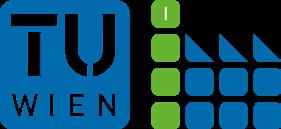
Searching for a pretext to visit
102 concircle.com
Vienna? Here’s the perfect one: our smart factory jointly operated with Vienna University of Technology in Austria and experience real world factory equipment powered by SAP S/4, EWM and DMC. Visit us at concircle.com & book your factory tour right away! real-life setting, from product design, planning, and manufacturing, to logistics and maintenance. According to the customer's needs and interests, different parts of the end-to-end scenarios can be highlighted.
Ralf Lehmann
see our software showcase and talk directly to our management in our headquarters building only 100 metres away from The Factory,” Ralf explains. In contrast, a global customer was able to stream the same experience to teams based across Europe, Asia, and South America simultaneously.
“Sometimes we have put on an overview and inspirational session for the top management, and then we will have three or four follow-up sessions for the whole team virtually,” explains Ralf.
SAP’s own teams value the interaction and are pleased to have in-person customers again, with direct feedback.
“We answer customer-specific questions and show the end-to-end value of supply chain – and SAP's ERP solutions integrated with our industrial hardware partners,” says Matthias.

The scenario is interconnected, and processes are visualised with lights.
“Imagine we are working here with liquid concentrate and have the standard production for the process industry with lots of tubes and tanks in there, all 100 percent realistic but our different ingredients are red, green and blue. We can mix different colours to demonstrate the customer scenarios,” says Ralf.
The key thing about The Factory at
SAP Industry 4.0 Center is this: it comes across as an evolution (although it may be a revolution) that provides a visual and actual representation of all the digital supply chain has to offer clients, customers and partners. That is because the physical factory is a genuine representation of a real-life scenario. So, when a customer first arrives, whether that is physically or virtually, their impression is not of a “too pristine to be believable” film set, but of something that could be their own production line, manufacturing facility or processing plant.
As Matthias explains, “It's really interesting to see how, when they enter our factory, our customers have a smile on their face because everything is not super-shiny or what you might expect from a marketing pitch. It's hands-on, with work centres of the kind you would find in real life.”
Maybe it’s the lab coat hanging up in the corner. Or perhaps it’s the (deliberate) tank overfill that Matthias
103
Matthias Deindl
Close the Loop – Sustainable and Digital
Intelligent, self-aware manufacturing connecting business strategy, people,

Your Factory, But Smarter
Most manufacturers today have some form of IoT or Industry 4.0 initiative in place. They may have sensors on the shop floor, computers across the supply chain, and are regularly generating masses of industrial equipment data – even if aren’t sure how to monetize it.
Driving sustainable value and intelligently connecting your business strategy with your people, processes and technology is essential, with smart manufacturing, sustainability and agility having moved up every manufacturer’s priority list.
Integrated & Connected: Machines, People, Processes and Big Data
Putting smart components or more automation into the process, in the hope of achieving smart manufacturing is simply not enough. Unlike a traditional factory, where people, assets, and systems all operate in isolation from each other (and must be continually coordinated), a Smart Factory integrates machines, people, and Big Data into a single, digitally connected ecosystem, which monitors and triggers its own maintenance.
Closing The Loop
At Atos, we understand that the convergence of the physical and digital worlds – from the shop floor and operational equipment, to the intelligent enterprise and the wider ecosystem – require both the right experience and the right technology infrastructure.
Our deep sector expertise means we know how to guide our customers to successfully
Digital Manufacturing
processes, and technology
transform their manufacturing plant into an adaptable, agile, closed-loop Smart Factory, including self-optimising, selfhealing production processes within a connected business network.
In conjunction with our technology partner, SAP, we use some of the world’s most advanced technologies, such as AI and Machine Learning, to create factories that not only orchestrate the manufacturing processes, but actually learn from their experiences.
The combination of SAP’s technology (like SAP BTP, SAP Digital Manufacturing Cloud, SAP Asset Intelligent Network, Team Center) and our step-based approach means our customers can easily adapt at their own pace to meet all sustainability, environmental, productivity and commercial needs.
What Can You Expect?
The shift from single, soiled systems and organisations to networks of capabilities is a game-changer for manufacturers. Our experience in this area means we are the trusted partner for some of the world’s leading manufacturing companies.
Atos’s consultative Smart Manufacturing service gives you:
• A clear strategy and a flexible roadmap with insight on how and where to start, what to expect, and how to scale.
• Advice on how to accelerate business gains, and drive sustainable value and environmental gains.
About Atos
Atos is a global leader in digital transformation with 112,000 employees and annual revenue of c. € 11 billion. European number one in cybersecurity, cloud and high-performance computing, the Group provides tailored SAP endto-end solutions for all industries in 71 countries.
Atos is a Global and Platinum SAP Partner.
• Co-development environments demonstrating proof of concepts and prototypes.
• Integrated solution design and implementation.
Interested in Learning More?

Download our brochure, speak to one of our experts, or request a tailor-made demonstration addressing your specific challenges.
Find out more at atos.net
105
people,
sets up to showcase the digital adaptability of the process, or the fact that a pick-and-pack scenario is running in the warehouse in the background. These combine to lend true authenticity to the experience and deliver real understanding.
“We show that we can speak with the automation layer, and that the automation layer can speak with SAP solutions. It’s about vertical integration, the information technology (IT) and operational technology (OT), and the total integration of those two worlds. It’s really demonstrable,” says Matthias.
C-suite executives, factory managers, IT experts or researchers can grasp the processes quickly, Matthias points out. And experts from different departments within the same company can come to the same place at the same time – virtually or in a hybrid format – without the need for multiple explanations as supply chain solutions are shown in action.
A chief operating officer (COO) or head of supply chain who is familiar with their own production facility can formulate questions about the industry-specific supply chain scenarios within The Factory at SAP Industry 4.0 Center. Convincing a chief

106
financial officer (CFO) to buy in to the head of manufacturing’s enthusiastic appreciation can be harder because they may have less knowledge of the ground floor. Yet sometimes the commissioning process starts at the other end of the business, in the C-suite, before it moves through to the manufacturing team, Ralf says.
“What we try to do is not only address those who are doing the purchasing, but also those who are using the products later on,” says Matthias. That is where a virtual tour alongside the in-person, real-life tour, can be invaluable. For example, two principal decision-makers can stream a live
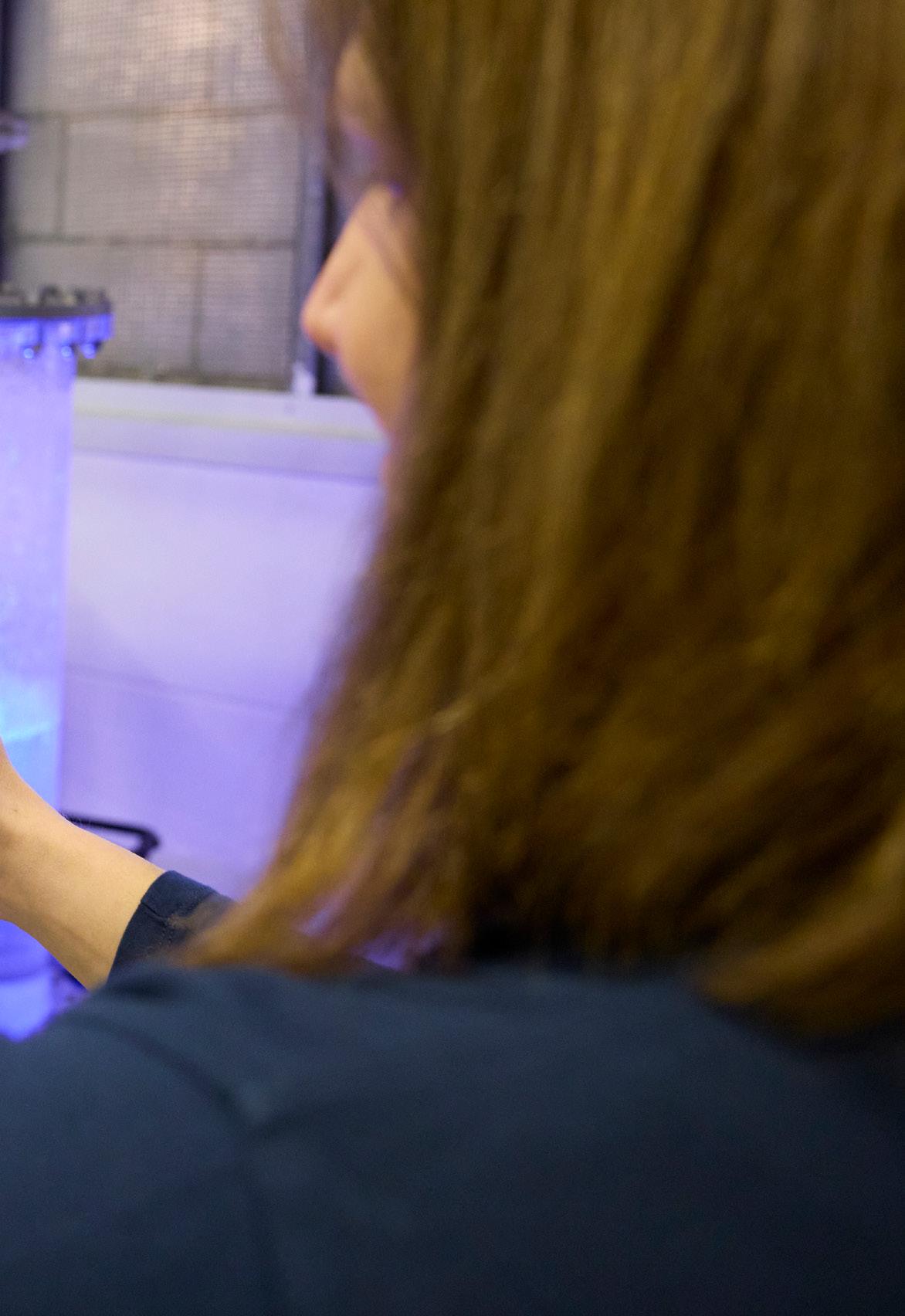
a
they want to see our software showcase and talk directly to our management in our headquarters building only 100 metres away from The Factory”
element,
feed to watch those who have to set up and operate a new process, or vice versa. It means questions or key issues can be pointed out and discussed through streaming technologies in different parts of the country, or the world, simultaneously.
“So, experts on the manufacturing side might want to know, ‘How did the automation of this robot work here? How did you integrate your smart tool? How does it work – show me!’ Then they can deep dive into the systems based on what they can see happening in the real enterprise IT landscape that we have in The Factory. And because everything is real, nothing is fake, it generates trust with our customers,” says Matthias. “People in top management don’t really need the details, but they can see the tangible use cases. It’s something they can grasp and discuss in a very short time.”
107
“People want to travel because there's
social
and
Ralf Lehmann, Senior Director of SAP Global Solution Management
Ralf adds that inclusivity across levels promotes communication. For example, a factory worker might point out that glitches could be created if a tool or table is used in a proposed context. Such a small but essential comment might play a crucial role in improving manufacturing or maintenance processes. On the flip side, this immersive experience also provides an opportunity for customers to provide valuable feedback, creating a collaborative community environment.
This sense of collaboration is right at the heart of SAP’s approach. Ralf points out that where competitors
might only run a scenario based on one operation or one out-of-the-box vendor, SAP is working in collaboration with many other business partners – small, medium, large, and global. Collaboration in this sense means building bridges, rather than operating in silos – a key mindset for SAP. The Factory is the perfect showcase for anyone needing to see discrete manufacturing, design to operate (D2O), and design to consume (D2C) capabilities, albeit on a small scale, and to visualise how something similar might fit into their own business. One of SAP’s great strengths is collaboration and cooperation, working with both partners and customers to help ensure

Design-to-Operate (D2O) and Design-to-Consume (D2C) Processes
DISCRETE ASSEMBLY
Design, build and operate a discrete unit to produce and mix syrups.


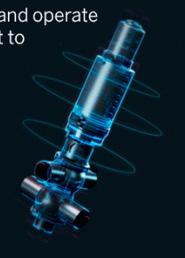
BATCH PRODUCTION
Develop a recipe for a concentrate. Produce, mix and pack the product.
108
the right solutions are available to suit particular needs.
“We would love our customers to run only SAP but – we have to be honest with ourselves – in reality, that is not the case. We are living in a heterogeneous world where the SAP
software environment and different cloud companies play an active role. So, it's about connecting and being able to execute the business process end to end in the most efficient and secure way,” Ralf says. He has plenty of experience with companies operating on a silo-based
109
“We are living in a heterogeneous world where the SAP software environment and different cloud companies play an active role. So, it's about connecting and being able to execute the business process end to end in the most efficient and secure way”
Matthias Deindl, Head of SAP Industry 4.0 Center EMEA and India
approach, which makes it difficult to connect solutions or software, and so he welcomes the newer outlook of collaboration.
“Times are changing, and customers are pushing for harmonisation and open industry communications standards,” explains Ralf. In a world of mergers and acquisitions, he adds, with multiple vendors across factories, a heterogeneous approach allows for digital transformation, mass personalisation, and configuration, which in turn adds value and futureproofs a customer’s business.
“We have a lot of service and implementation partners, and SAP is powerful because of the partner ecosystem. They are all important partnerships, from the smallest automation-centric, to the biggest as well,” he says. And if there is something that the last three years have shown, it is that no business is an island, and no supply chain is 100 percent secure.
Around 25 or so industrial partners support The Factory setting either by providing service input, supplying hardware, or jointly interacting over a digital supply chain order. Ralf and Matthias emphasise that partnership is SAP’s superpower.
“They all play a crucial, active role in bringing solutions to our end customers,” says Ralf. “SAP has such

110

111
SAP AND CENIT TWO STRONG PARTNERS SHAPE THE DIGITAL FUTURE
SAPʼs solution and growth strategy is clearly focused on its partners. What role do partners play specifically in the design-to-operate solution portfolio?
Design-to-operate, or the digital supply chain, represents one of the broadest and strongest ecosystems within the SAP world. SAP partners are an essential part of our growth strategy, especially with regard to the digital supply chain. Partners play an important role in our portfolio development of our, and we view partner-generated revenue as a strong KPI that impacts SAP ʼs success as a company. In addition, we have always relied heavily on our partners in various business-related dimensions, be it sales and presales partnerships, value-added reselling, or the development of add-on solutions provided via the SAP Store. If we now look at SAPʼs cloud strategy, the role of partnerships becomes even more crucial: based on their expertise and their add-on and implementation solutions, they will be a mainstay for our cloud-related offerings and processes.
CENIT ʼs position as a certified SAP partner for implementing true end2end design to operate processes, as a developer of new software offered on the SAP price list, but also as a reseller of SAP licenses and cloud solutions, is unique in the design-to-operate solutions market. What are the most important advantages for CENIT ʼs customers?
PETER SCHNECK CEO CENIT AG

CENIT is THE one-stop solution when it comes to SAP and digitalization in manufacturing industries. Our core message to our customers is: no matter whether you are running a PLM system or an SAP PLM system and an SAP ERP solution, there is this one experienced partner that can help connect these data pots. Our background is our strong expertise throughout the SAP world. And we are highly familiar with the different PLM systems on the market. Based on our experience and thanks to our proven track record with more than 6,000 customers in this environment, we have a unique selling proposition in this respect.
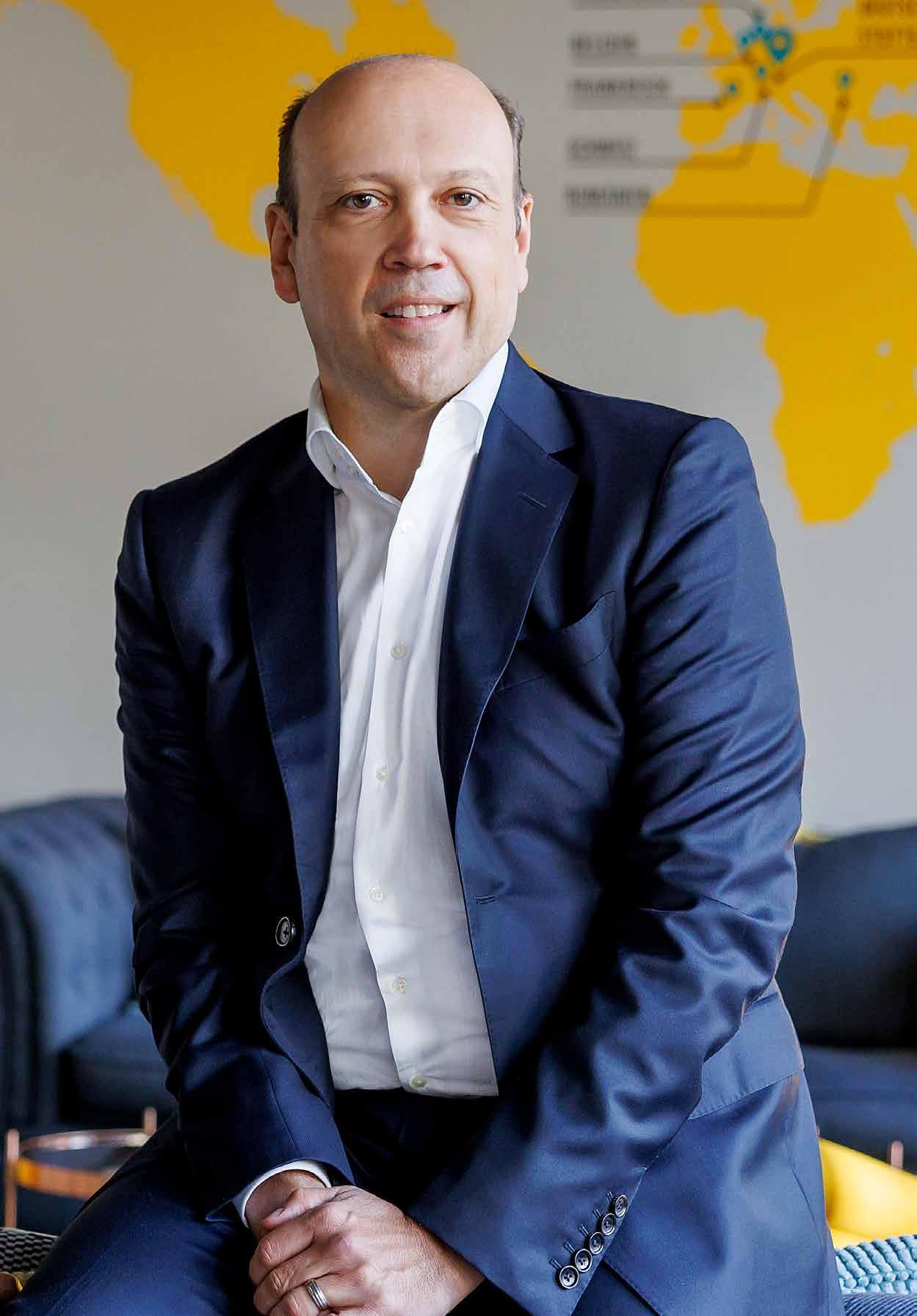 ANDREAS J. WAGNER SVP DIGITAL SUPPLY CHAIN MIDDLE & EASTERN EUROPE
ANDREAS J. WAGNER SVP DIGITAL SUPPLY CHAIN MIDDLE & EASTERN EUROPE
a broad portfolio when it comes to digital supply chain, and we think many of our customers across the world don’t realise that. Being able to support events here and put on inspirational sessions with hundreds of virtual attendees will showcase that.”
Whether they are showing off the discrete assembly or the process industry scenario, Ralf and Matthias have a spring in their steps as their enthusiasm spills over.
“We are running cloud solutions, such as the digital manufacturing cloud in order to live this in a very tangible way,” says Ralf. “And the funniest thing is, whenever we start a customer session we say, ‘Everything you can touch here is not actually what we’re selling.’ What we do at SAP is the brain inside the orchestration, the software that is empowering these scenarios. But what you can touch is what is familiar and recognisable from home, from your own factories, and this is the really cool part of The Factory at SAP Industry 4.0 Center.”
Building SAP’s Strong DSC Partner Ecosystem
Ralf and Matthias’s passion for innovation, collaboration, and “building bridges, not silos” is shared by Sasa Glisic, Anna Jagodzinska, and Bernd Meier-Mader, who form the leadership team of SAP’s MEE

digital supply chain (DSC) partner ecosystem. Their joint task is to connect DSC partners and SAP’s organisation and to accompany partners through the process of successfully setting up and delivering supply chain implementation projects to customers. At the same time, they help to generate growth, increase revenue, and boost competitive advantage.
“We are each based in different market units, and together we are responsible for a strong DSC partner ecosystem in Middle and Eastern Europe, which consists of 26 countries,” says Anna, leading the conversation as they set out how they go about achieving their mutual aims.
Building bridges starts with transparency, agree Bernd, Anna and Sasa, who strive to offer clarity and help businesses to benefit from SAP’s DSC partner ecosystem. They highlight practices that favour close, successful,
113
Sasa Glisic

114
“SAP partners also benefit from early knowledgesharing, enabling development of new tools such as the recently launched SAP Quality Issue Resolution solution, which enables customers and suppliers to collaborate in a problem-solving process”
Sasa Glisic, SAP MEE digital supply chain (DSC) partner ecosystem
and well-coordinated cooperation. Gaining SAP’s official DSC partner status is a seal of both approval and trust, and to achieve it a continuous flow of information is exchanged between parties.
“We can assist partners in gaining access to various funds that, for example, they can use for business
development activities depending on their objectives,” says Bernd, highlighting just one of the many advantages of the partnership. The team points out that, in addition, SAP offers a range of business models through which DSC partners can sell SAP software solutions, maximising the benefits from a leading solution portfolio in a fast-growing market.

115
START-UP SECURES FUTURE WITH SAP S/4HANA PRIVATE CLOUD EDITION
As a pioneer in the aerospace industry, Mynaric also decided to become a first mover in the SAP world and was one of the initial customers to choose SAP S/4HANA Private Cloud Edition (PCE).

Due to the complex requirements and the desire for agility and reliability of the IT system, the decision was made to pursue this path together with NTT DATA Business Solutions and SAP. The initial focus was to find a setup that would allow the complex IT project requirements, international expansion, and production scalability at the same time. SAP S/4HANA was implemented within the framework of SAP Best Practices and could be put live after almost six months. With this step, Mynaric shows that they recognise the added value of future-proof and sustainable IT and also focus on it despite a large investment decision.
TAKING NEW HEIGHTS WITH SAP S/4HANA CLOUD

With the future-oriented system, intelligent technologies and smart services, the course has been successfully set for future growth, strategic decisions and visionary plans at Wingcopter GmbH.

The startup chose a RISE with SAP solution, an intelligent SAP Cloud ERP landscape, which is significantly raising the game for business processes at the innovative start-up. NTT DATA Business Solutions has qualified itself as a powerful IT partner with a high level of expertise and the flexibility to operate in an extremely dynamic project environment.
With the launch of the new fit-to-standard solution after six months, several goals have been achieved: the gradual development of an ERP+ system to meet the business objectives, and the establishment of an IT environment that complies with documentation requirements and enables efficient management of production. At the same time, the cloud and service-only strategy was successfully implemented with NTT DATA Business Solutions. In a competitive market with short innovation cycles, the investment in a future-proof IT system landscape with a modern ERP system offers the ideal preparation for a digital future.
Three questions for Mersun Sezer, Head of Industry Focused Consulting Services
What are the trends for 2023 in the supply chain?
I am firmly convinced that, in addition to the further digitalisation of intralogistics through the introduction of automated warehouse systems and automated transport systems, extralogistics in particular will also become more digitalised. Logistics is becoming more and more technical through vertical and horizontal integration and more transparent across company boundaries in the interaction of all participants in the supply chain. The focus continues to be on the planning of these chains. The supply chain is increasingly becoming the chain to the network and thus, in the next step, the platform. Economic, regulatory and environmental influences will have an even greater impact on this area. Every end user of the software solutions and thus every company will have to pursue and realize the basis and the subsequent expansion stages here.
What does resilient supply chain stand for?
Resilient means reacting more insensitively to external influences and thus being stable in function and reaction to constant changes or “sudden” events. If the supply chain is resilient, this means that the chains or future networks can respond to external influences such as disrupted processes due to war, pandemics or strikes with stability and functionality.

What do you offer customers to fully cover their supply chain processes?
NTT DATA Business Solutions first of all offers its customers the entire range of SAP solutions in the area of supply chain, production and comprehensive planning. In addition, we close “white spots” that are not covered by SAP itself with SAP-based OwnIP solutions. For and with customers, we develop IoT solutions in partnership, which open up new business models and represent their and our innovative strength.
Three questions for Dries Guth, Principal Innovation Manager & Head of Co-Innovation Lab


How can NTT DATA Business Solutions help clients establish sustainable processes?

In order to establish sustainable processes, it is important to include environmental, social and societal indicators in addition to profitability indicators such as time or costs. Two concrete examples from practice: we are currently establishing a logistics platform for a young drone start-up to quickly and safely deliver medicines to remote villages in Africa (see Wincopter case on this page). For another customer, we are currently pursuing the goal of transparently mapping the so-called “productbased carbon footprint” of its products in order to simulate product variants that have better carbon footprints. This covers all information from the entire supply chain from Scope 1 to 3. As it is important to include all parties involved, from suppliers through the company’s own production to sales and operations.

How sustainable can the supply chain be, what is the focus?
This depends on the specific use case and its sustainability goals. There is no one solution for everything. Let me have two examples here: energy-intensive production processes not only attach importance to optimisation due to increased price developments on the energy market, but also aim to drastically reduce CO2-equivalent emissions, especially since the EU-wide climate agreement. Another topic area is, for example, the reuse of raw materials in the sense of a circular economy. Here, goods, services and products that have been decommissioned are returned to the production cycle and thus serve as raw materials for new products in the sense of a cradle-to-cradle supply chain. This goes far beyond the recycling of a PET bottle. Because here, a car can then also be made into a car again.
Which SAP solutions are used?
We currently see enormous potential for the SAP Cloud for Sustainable Enterprises portfolio in conjunction with SAP S/4HANA to meet current environmental and social issues such as the supply chain due diligence act in Germany . Worth highlighting are the solutions SAP Product Footprint Management to track productbased emissions, SAP Responsible Design and Production to support the circular economy and the holistic reporting tool SAP Sustainable Control Tower. Together with our Co-Innovation Partners, we also develop our own innovative and sustainable business solutions.
Once approved as a partner, a business also has the option to use SAP as a sales channel for its own solutions.
“We motivate SAP’s DSC partners to break new ground,” says Sasa, citing the example of businesses being able to package their own intellectual property and services in combination with SAP solutions. “This offers a smart solution and allows us to combine the strength of partners and SAP, which in turn leads to the easier initiation of transformation projects for customers.”
By building up their own knowledge of both customers and partners, Sasa, Anna and Bernd help and enable new partners to demonstrate their organisations’ deep technical expertise. Sasa adds, “Imagine a circumstance where a customer wants to know what is needed to switch from an on-premise solution to the cloud. SAP partners also benefit from early knowledge-sharing, enabling development of new tools such as the recently launched SAP Quality Issue Resolution solution, which enables customers and suppliers to collaborate in a problem-solving process.”
New partners who join SAP’s partner programme gain access
to a portfolio of industry-leading solutions that can boost business. “In addition to that, we provide access to SAP demo systems for partners,” says Sasa. The team’s objective is to pursue an efficient approach to partnerships, which enables continuous development of new customers and business. Typically, Anna, Bernd and Sasa plan go-to-market (GTM) activities that align with SAP’s partner network. This helps ensure that they have an in-depth understanding of how they can support each partner and increase the adoption of modern supply chain and manufacturing solutions. This year, the team has already kicked off GTM activities with a central theme of efficiency.
Sharing how they source information and define actions that drive efficient cooperation, Anna, Bernd and Sasa explain that they screen the partner project pipelines, DSC readiness, and utilisation. This could mean sharing recent organisational changes, updating information on strategy to keep partners aligned on key topics such as sustainability solutions, or highlighting how SAP Business Technology Platform can be used in supply chain.
Anna says the team and the partner keep track of the success of a project as it goes live to enable a smooth rollout. Maintaining dialogue between all parties helps ensure
118
that customers are satisfied. Happy customers lead to more referrals by recommendation, which in turn lead to the implementation of similar projects for other customers. Collaboration also opens opportunities to sell new licences, and as demand increases, raises revenue for both SAP and the partner.
Another objective is to motivate partners to develop and deliver solutions that are not already available in SAP’s standard portfolio and the SAP Store online marketplace. In turn, this allows more customers to benefit from partners’ innovation. As support, Sasa, Anna and Bernd stay aware of market demand. This allows the team to suggest training for existing partners, enabling them to satisfy any specific customer interest, requirement, or request. Take the area of sustainability, which is increasingly important to customers, as an example. The trio can also demonstrate how partners can leverage The Factory for customer engagements.
“The annual GTM conversations are crucial and help us to understand the partner perspective. In our experience, we find that the greatest success occurs when both the alignment is good and we have facilitated the incorporation of our partners’ knowledge into SAP’s organisation and portfolio,” says Sasa.
What then, is the most important strategic direction that Sasa, Anna, and Bernd will be sharing with the partner network in 2023?
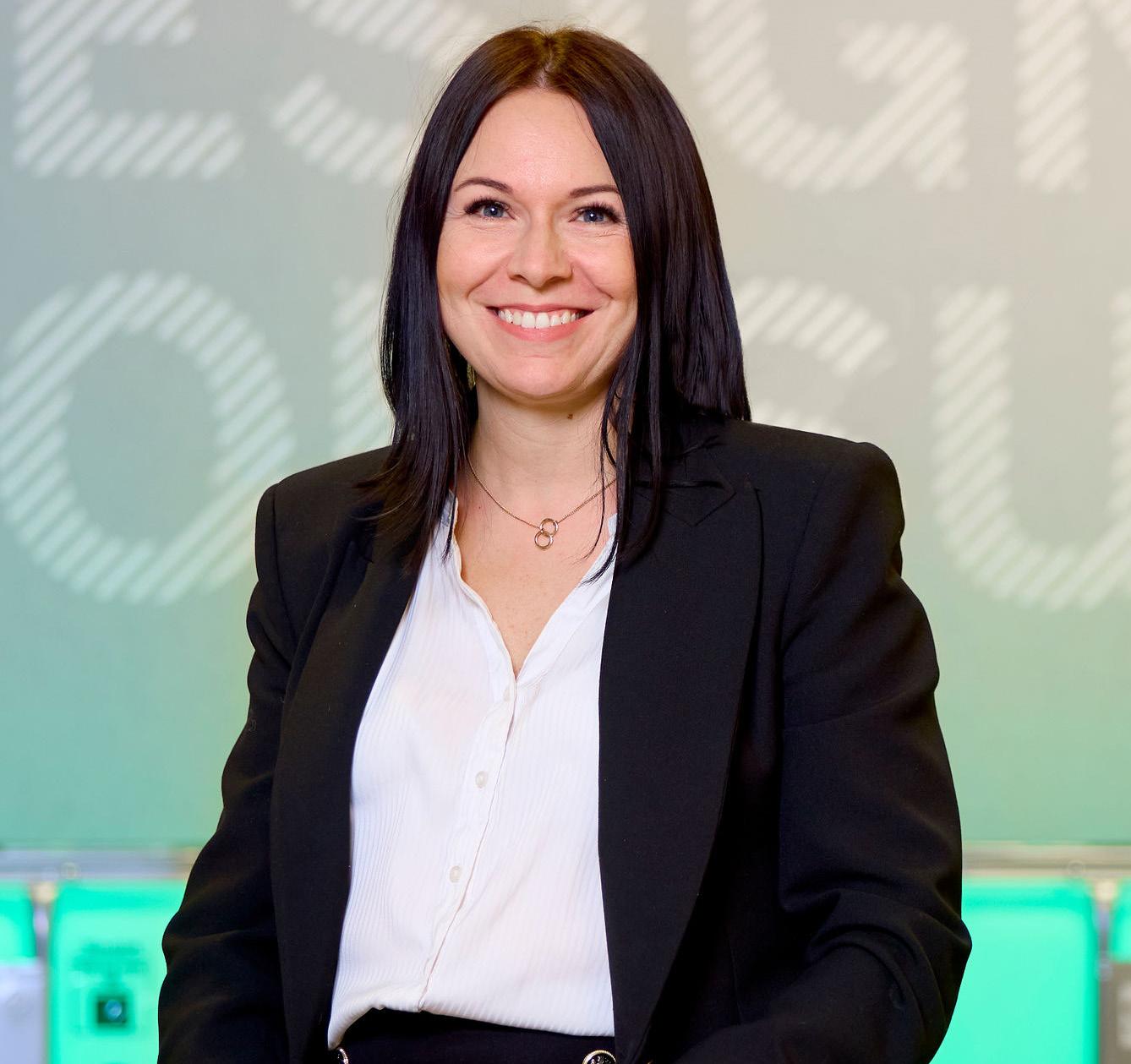
119
Anna Jagodzinska
“We are each based in different market units, and together we are responsible for a strong DSC partner ecosystem in Middle and Eastern Europe, which consists of 26 countries”
Anna Jagodzinska, SAP MEE digital supply chain (DSC) partner ecosystem
“We are asking partners to support customers’ big digital transformation projects focusing on the RISE with SAP solution and consider supply chainrelated, and manufacturing-related improvements because these projects are of high interest,” Sasa says.
RISE and Supply Chain Solutions allow customers to improve efficiencies, fund innovation, and transform their mission-critical systems while minimising business risk. The solution can be combined flexibly from:
• Cloud ERP for every business need
• Industry next practices and extensibility
• Analytics and business process transformation
• Outcome-driven services from SAP and our partners.
Big transformations in particular provide a good opportunity to form the foundations for future capabilities and supply chain competitiveness. Such foundations have an impact on the future readiness and success of a company, according to Sasa, Anna and Bernd.
“We rely on partners to use their industry expertise and objective viewpoint to showcase the power of new cloud solutions to customers and help convert them from an onpremise-based architecture,” Sasa explains. “We want partners to help customers with their precious product and industry know-how. They can run innovative and customer-valued sales cycles and successful project delivery approaches that will allow

120
“We can assist partners in gaining access to various funds that, for example, they can use for business development activities depending on their objectives”
Bernd Meier-Mader, SAP MEE digital supply chain (DSC) partner ecosystem
Bernd Meier-Mader
DIGITAL SUPPLY CHAIN
Mid-sized manufacturing companies today must operate global supplier networks, omni-channel sales and guarantee quick delivery and comprehensive services to meet customer demands. What you might not know is that even just a few targeted investments can allow great progress, from networked processes to increased transparency along the entire supply chain. This covers the spectrum from procurement, warehousing and transport down to maintenance and customer service.
All for One won the SAP Digital Supply Chain Appreciation Award 2022 at the Diamond Initiative for Partners.
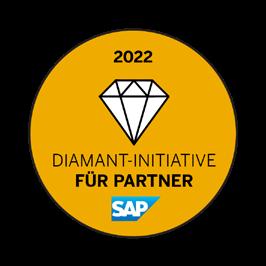
SUSTAINABILITY
RESILIENT SUPPLY CHAINS
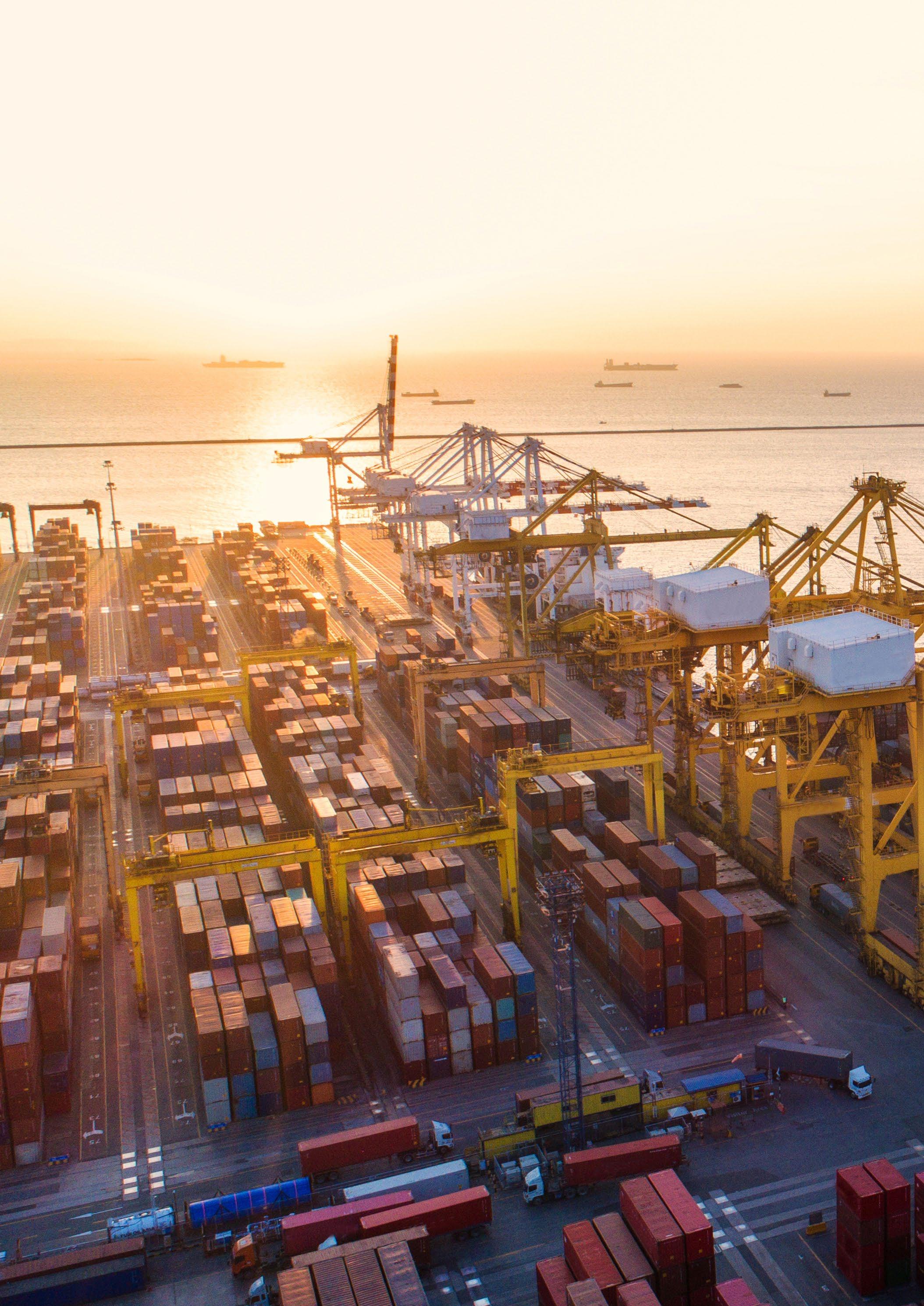
SUPPLY CHAIN DIGITIZATION
WAREHOUSE LOGISTICS & MATERIAL FLOW
EFFICIENT WAREHOUSE MANAGEMENT
TRANSPORT MANAGEMENT & SHIPPING
CUSTOMS & FOREIGN TRADE MANAGEMENT
SUPPLY CHAIN PLANNING
PRODUCT DATA MANAGEMENT
ALLFORONESTEEB.COM/DIGITAL-SUPPLY-CHAIN
Every day at All for One Group 2,700 experts give their all to increase the competitiveness of our customers. We gather together the deciding factors from among the facets of competitive advantage to support over 3,000 customers in Germany, Austria, Switzerland and Poland in transforming their companies and strengthening their competitiveness.
©MAGNIFIERstock.adobe.com

122
a simultaneous boost to indirect sales revenue growth rates while identifying further relevant cloud solutions. In addition, we want partners to actively contribute to meet customer requirements more easily and quickly through the positioning of ‘ready-to-use’ solutions from SAP Store.”

The trio agrees that the powerful circle of customer, partners and SAP’s reputation and knowledge will be crucial for continued success.

“This is particularly true during the current phase, where we have to restore supplyand-delivery capabilities and competitiveness under new and more difficult conditions,” Sasa says.
As a team, Anna, Bernd and Sasa are highly motivated to turbocharge SAP’s success with the help of a great partner network that still has so much potential to fulfil. There are lots of new topics and innovations that SAP’s partners can offer to their installed base and to new customers.
“DSC is a very consultationintensive business, so we will continue to onboard
123
“We want partners to actively contribute to meet customer requirements more easily and quickly through the positioning of ‘readyto-use’ solutions from SAP Store”
Use Experience start from scratch! Don't as a Template
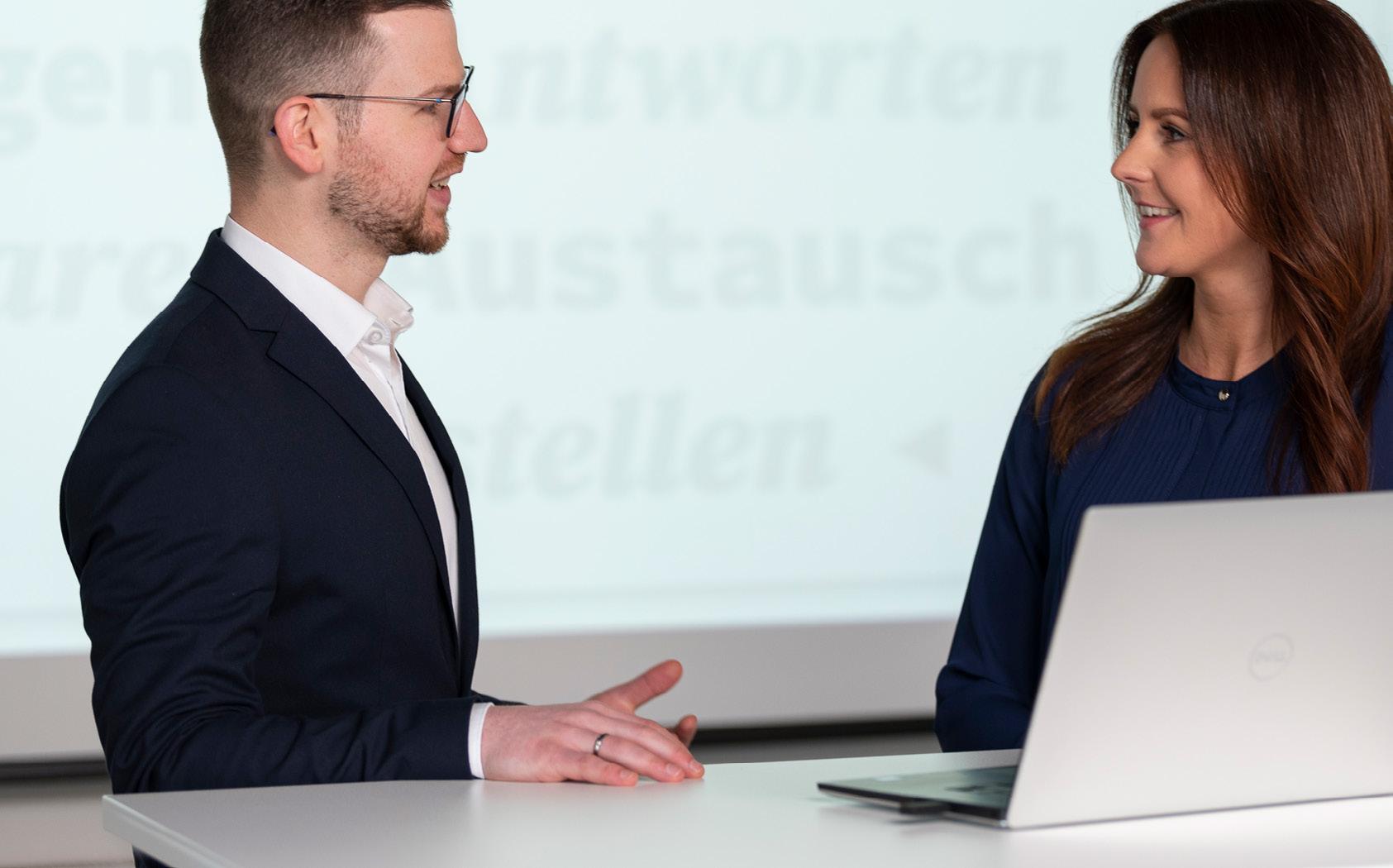
all the processes are interdependent. That is why a digitization project is particularly challenging in this field. Over the years we decided that working with an SAP demo system right from the very start provides an important hands-on experience for the customer and serves as a solid foundation for the discussions that are crucial to specify the project requirements as precisely as possible. This initial phase is designed to convey the necessary terminology, processes and integration options of the system for the customer. On the other hand the SAP experts will learn more about the customer’s logistics processes and requirements. The subsequent discussions in the concept workshops will take place with a better mutual understanding on both sides.
Every company has its individual processes to be considered, there are also some components and features the customers require time and time again. So we came up with a compilation of readymade best practice and customizing components that have repeatedly been used in previous projects ranging from small warehouses to distribution centres with a material flow system. A »Best of«, if you will: The prismat/RAKETE (»Rakete« is German for »rocket«) is a system base that is preconfigured for S/4HANA and that serves to discuss process workflows and details. It is also suitable for testing and knowledge transfer before the realisation phase of the project even starts. The prismat/RAKETE for S/4HANA is designed for a cloud deployment, enables efficient project implementation and ensures a successful result.
To make sure that the customer will end up [happily ever after] with the solution that is needed, we offer three different versions of the prismat/RAKETE: the Discover Edition, the Prototyping Edition and the Implementation Edition, each covering different requirements and scopes, depending on the customer’s needs.
If you are wondering, what a digital transformation with the prismat/RAKETE will look like when put

into practice, please watch the video we made with our customer WISKA Hoppmann GmbH, a supplier of cable glands, installation material, maritime lighting and CCTV, for the maritime industry, shipbuilding, offshore facilities etc.

About prismat
The prismat GmbH is your partner for the implementation of sustainable SAP solutions for their logistics. As a spin-off from the Fraunhofer Institute for Material Flow, we have been using our expertise since 1991 to help companies successfully optimize processes in warehouse and transport logistics, offering a comprehensive range of services including consulting, implementation, platform and migration strategies, licenses, support and training. We place particular emphasis on standards-based implementation. More than 220 colleagues work every day on our vision to revolutionize the efficiency and sustainability of logistics processes and systems.
124
knowledgeable partners in our ecosystem,” says Sasa. “We have a new competency framework in the SAP PartnerEdge® program that gives good guidance to develop partners’ own capabilities, raise market visibility, and make it easier for customers to recognise – and trust – partners’ proficiency in any given area.”
The team shares the conviction that SAP will become an even more partner-led company in 2023. As Sasa summarises, “It is a pleasure to watch as collaborations lead to a
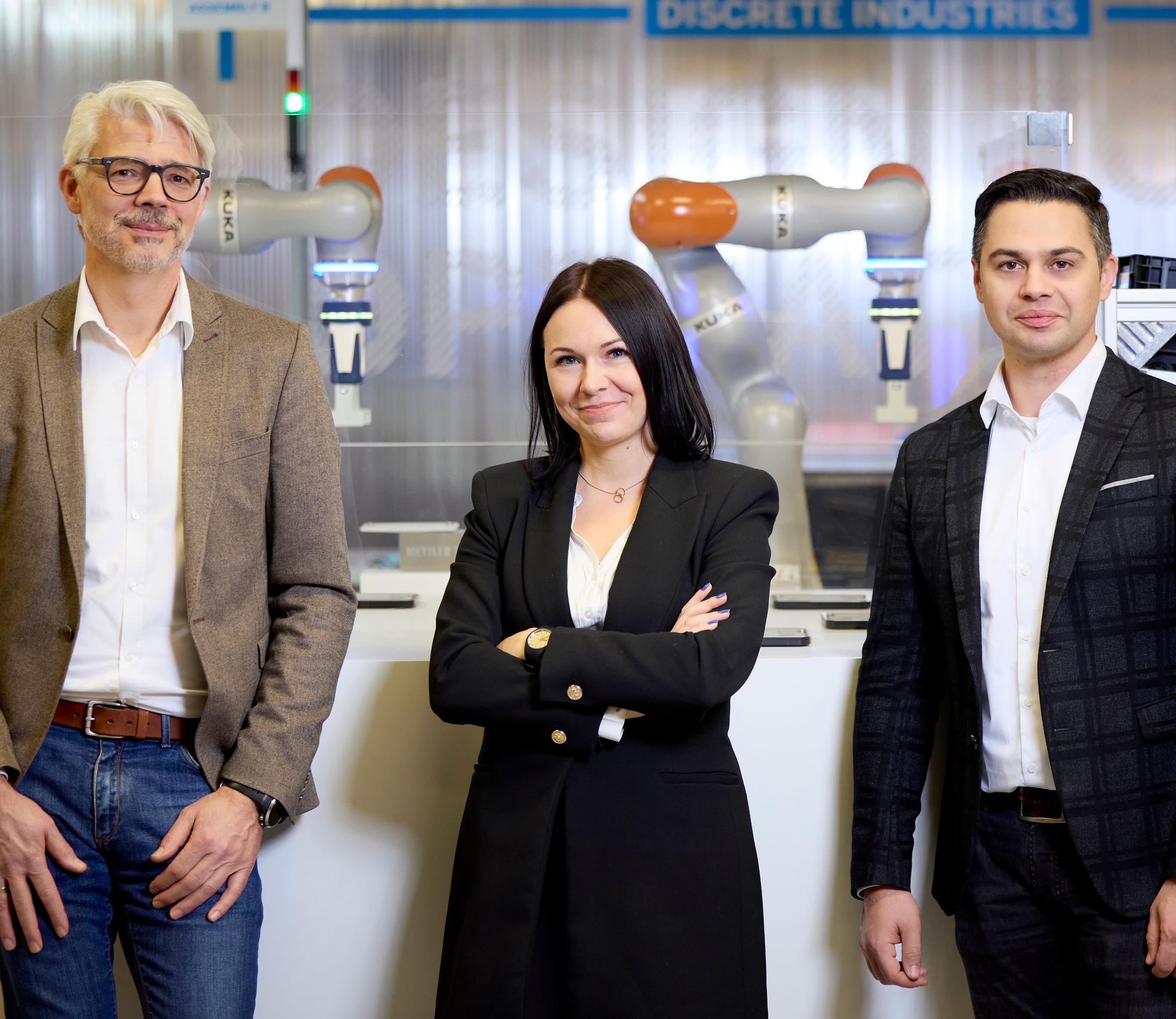
win-win-win strategy, where partners, customers and SAP gain not only a share of the expertise, but also the successes.”
SAP executives would like to express gratitude to all the partners who have joined us to contribute to this issue: all for one steeb, Atos, BearingPoint, Camelot ITLab, cenit, CONCIRCLE, CONSILIO, LeverX, NTT DATA, prismat and TeamViewer.
For further information on SAP’s offerings, visit www.sap.com
125

126 The World’s Leading Life Sciences Supply Chain Event 25-27 April 2023 - Centre de Congrès de Lyon, France Visit: logipharmaglobal.com Or simply scan the QR Code 5% OFF USING CODE: CHAIN5LP 1000+ Life Sciences Professionals To Network With 100+ Life Sciences Supply Chain Experts Sharing Their Practical Insights 15+ Hours of Invaluable Networking Time 3 DAYS of Insightful Content































































 LEAN DIGITALISATION GREEN
by solar and biomass in our main production zone.”
LEAN DIGITALISATION GREEN
by solar and biomass in our main production zone.”




































































































 ANDREAS J. WAGNER SVP DIGITAL SUPPLY CHAIN MIDDLE & EASTERN EUROPE
ANDREAS J. WAGNER SVP DIGITAL SUPPLY CHAIN MIDDLE & EASTERN EUROPE



















